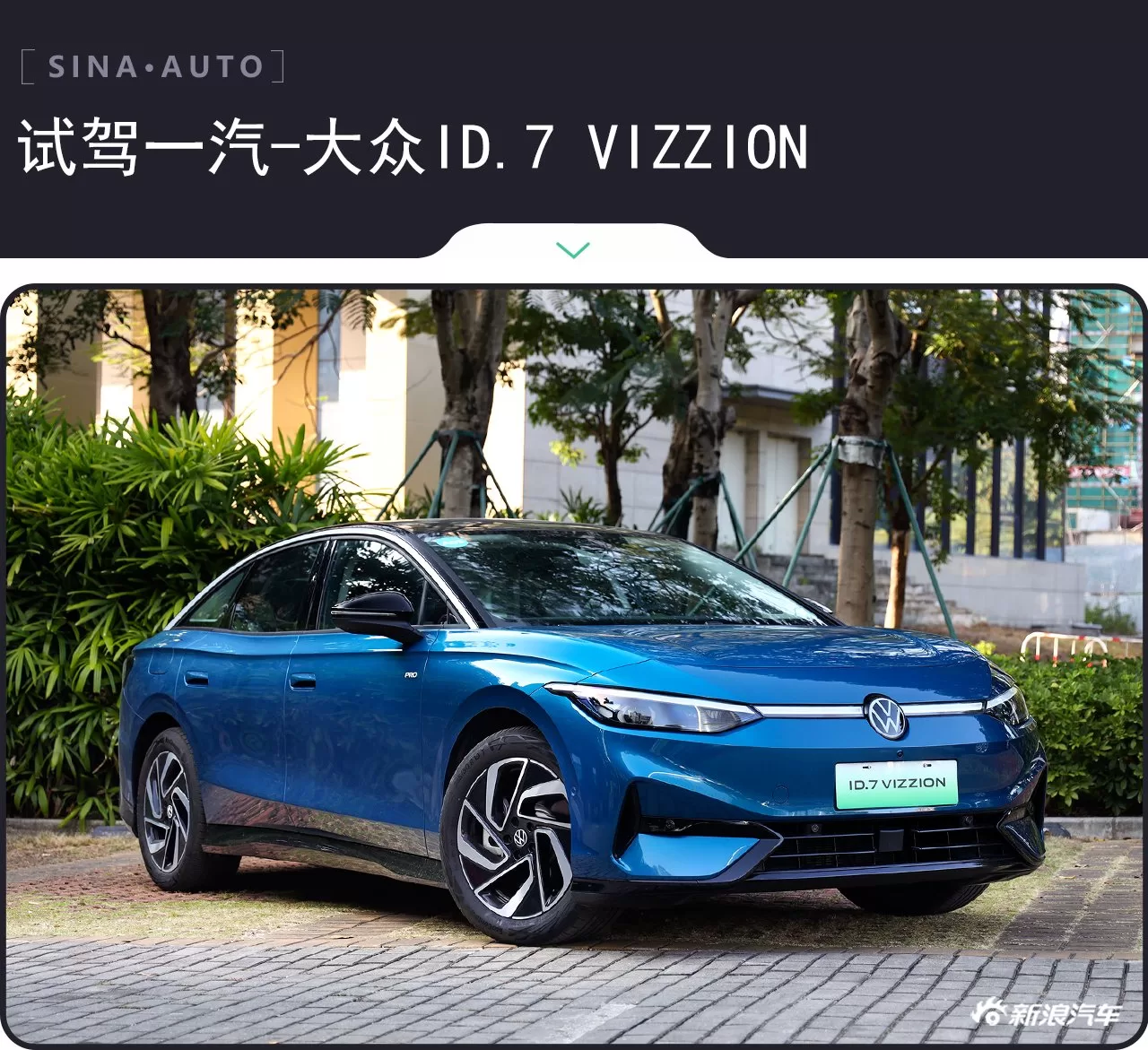
The Volkswagen ID.7 VIZZION is the first sedan developed based on the Volkswagen MEB pure electric platform, and it is born as the flagship of the family’s pure electric vehicles. The parameters and dimensions of the domestic and overseas models are almost identical, making it another authentic pure electric vehicle introduced by FAW-Volkswagen in China. But that’s not the most crucial point. Compared to other models in the ID. family, the Volkswagen ID.7 VIZZION performs better in terms of intelligence.
Static experience of Volkswagen ID.7 VIZZION Driving it still feels like a Volkswagen The Volkswagen ID.7 VIZZION made its domestic debut at the Shanghai Auto Show in April this year, and on November 22, it officially began pre-sale, with the official pre-sale price of the first edition being 237,777 yuan (33570$). We have already experienced its exterior and interior in detail before, and this time we will mainly talk about how it drives.
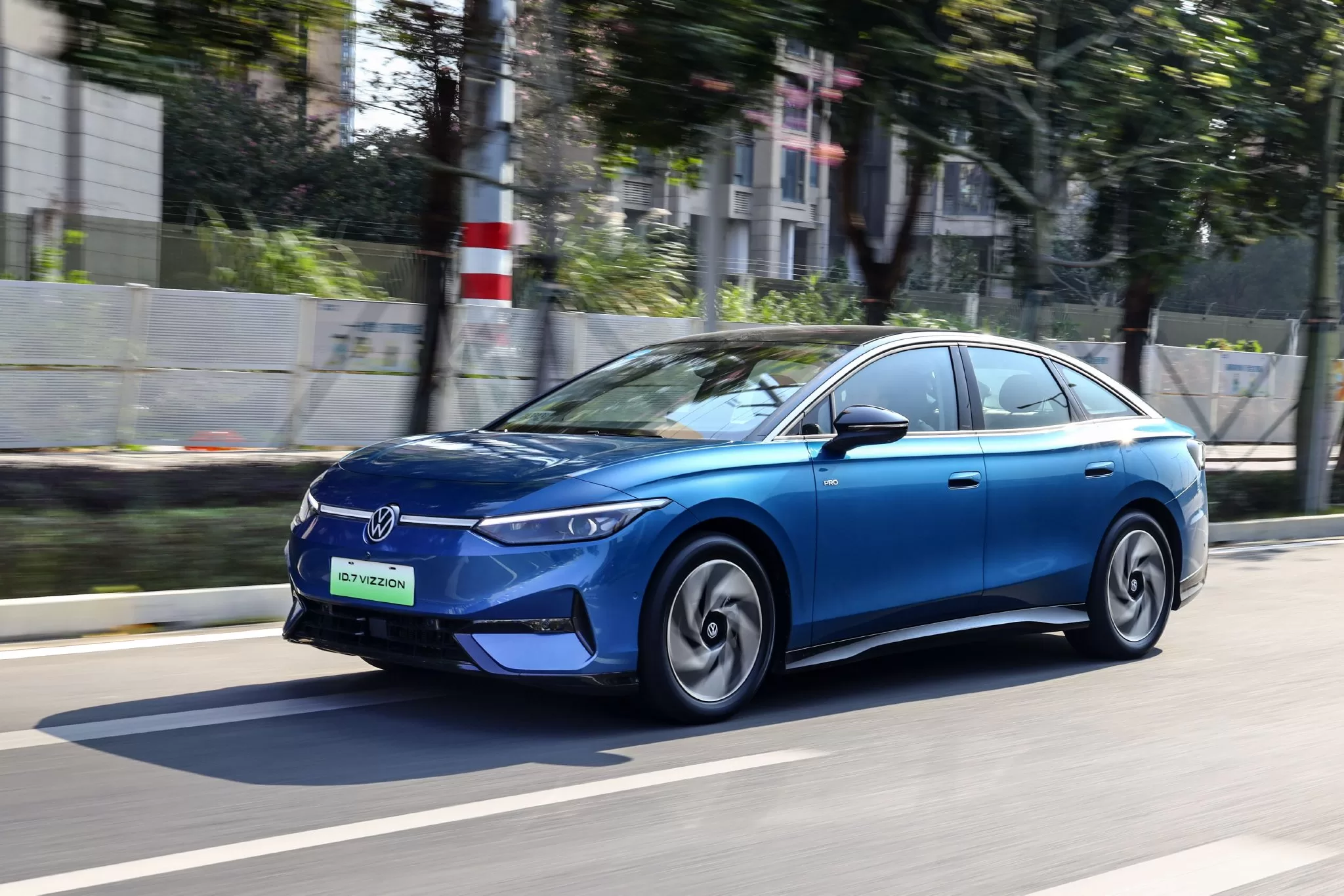
The car we test drove this time is the ID.7 single-motor rear-wheel drive version, with a maximum motor power of 150kW and a maximum torque of 310N·m. With the characteristics of low-torque motor, the power output is rapid and smooth during acceleration. The unique power performance of electric vehicles makes ID.7 no different from other brands of electric vehicles in the same level. However, the advantage of ID.7 lies in the 50:50 front and rear axle weight distribution, as well as the consistent heavy suspension tuning style of Volkswagen, which does not make rear passengers feel dizzy during rapid acceleration, greatly improving comfort.
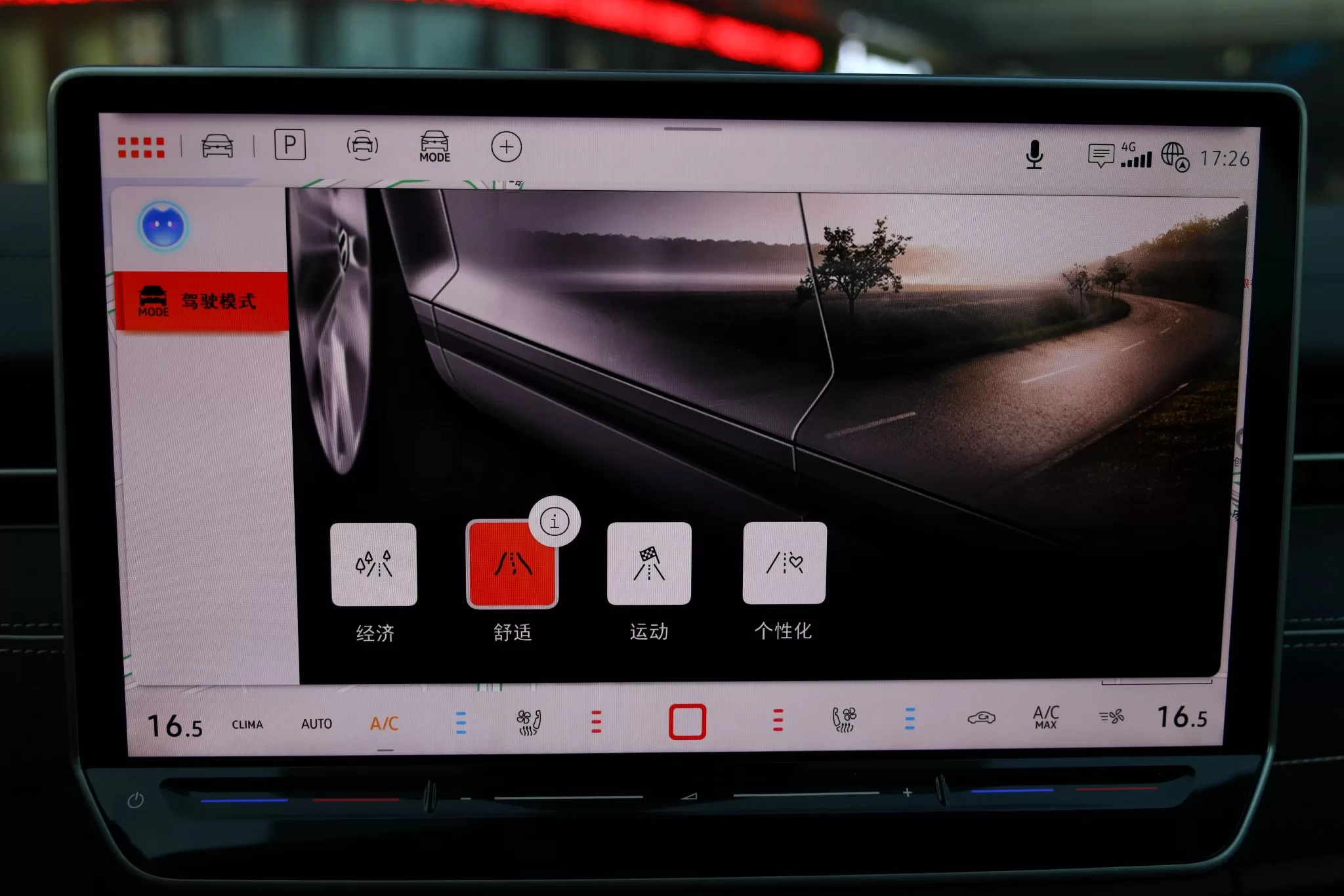

ID.7 offers 4 driving modes, with preset “Economy”, “Comfort”, and “Sport” modes, and a customizable mode that allows for adjusting power performance according to personal preferences. In actual experience, the sensitivity of the acceleration pedal varies slightly in the three preset modes, with the “Sport” mode having the strongest regenerative braking force.
Personally, I prefer the “Economy” mode, as the acceleration from a standstill is not sluggish, and when releasing the accelerator pedal during high-speed cruising, the vehicle glides further without the drag of regenerative braking, making it smoother and more comfortable. When deceleration is needed, switching to the “B” gear activates strong regenerative braking, with braking force similar to pressing the brake pedal halfway down.
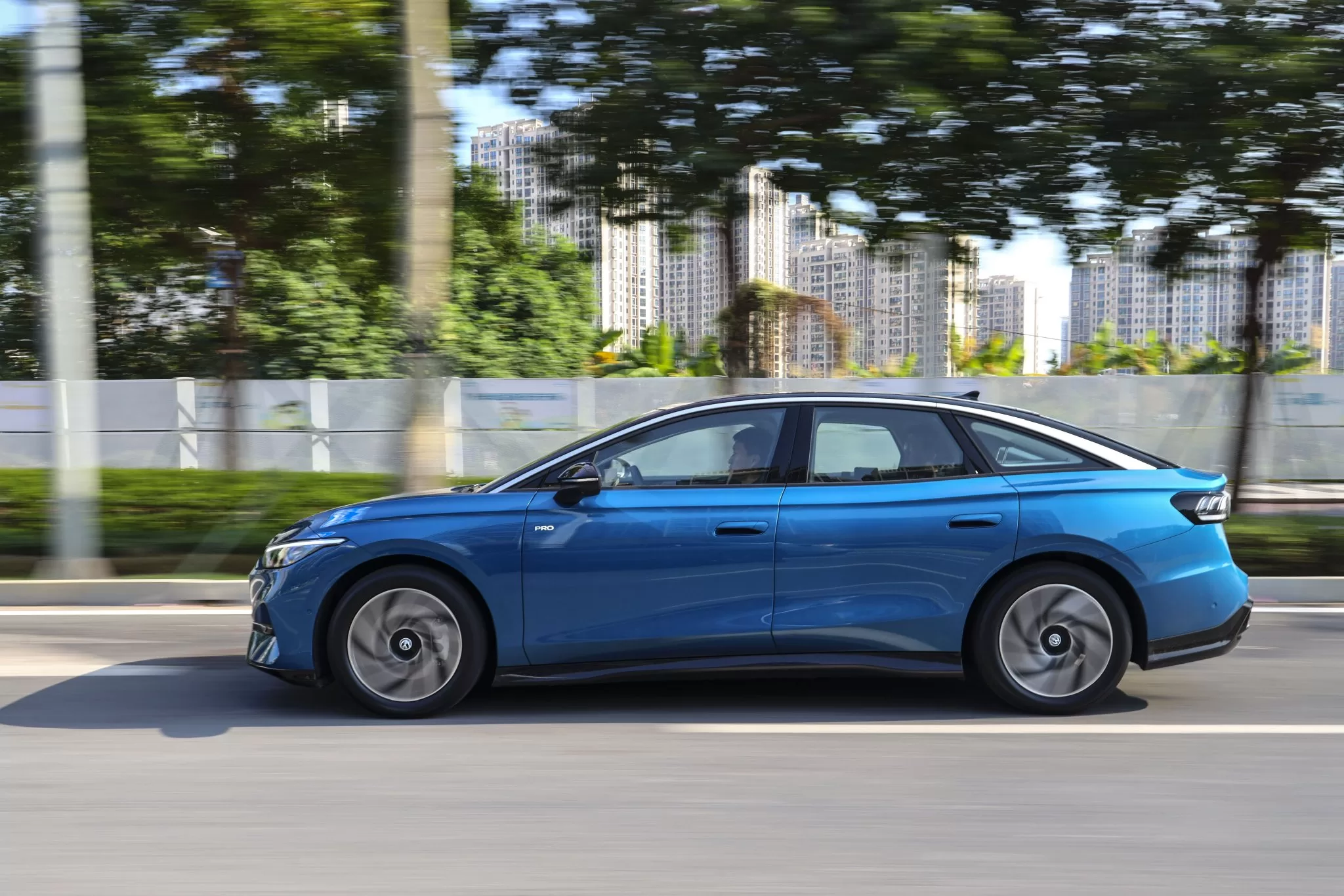

The biggest surprise for me with ID.7 is its excellent performance in NVH (noise, vibration, and harshness) when driving at high speeds. Firstly, both the front and rear windows use double-layered and glued glass, which isolates most of the environmental noise. Secondly, the smooth exterior design of the vehicle and a low drag coefficient of 0.23Cd significantly reduce wind noise.
Lastly, and most importantly, depending on the model, ID.7 uses Hankook or Michelin electric vehicle-specific EV tires, which excel in both quietness and comfort. Combined with the absence of engine noise, the vehicle is incredibly quiet when driving at high speeds, creating a tranquil atmosphere comparable to that of a luxury traditional gasoline-powered car, despite its price of over 200,000 yuan (28240$).
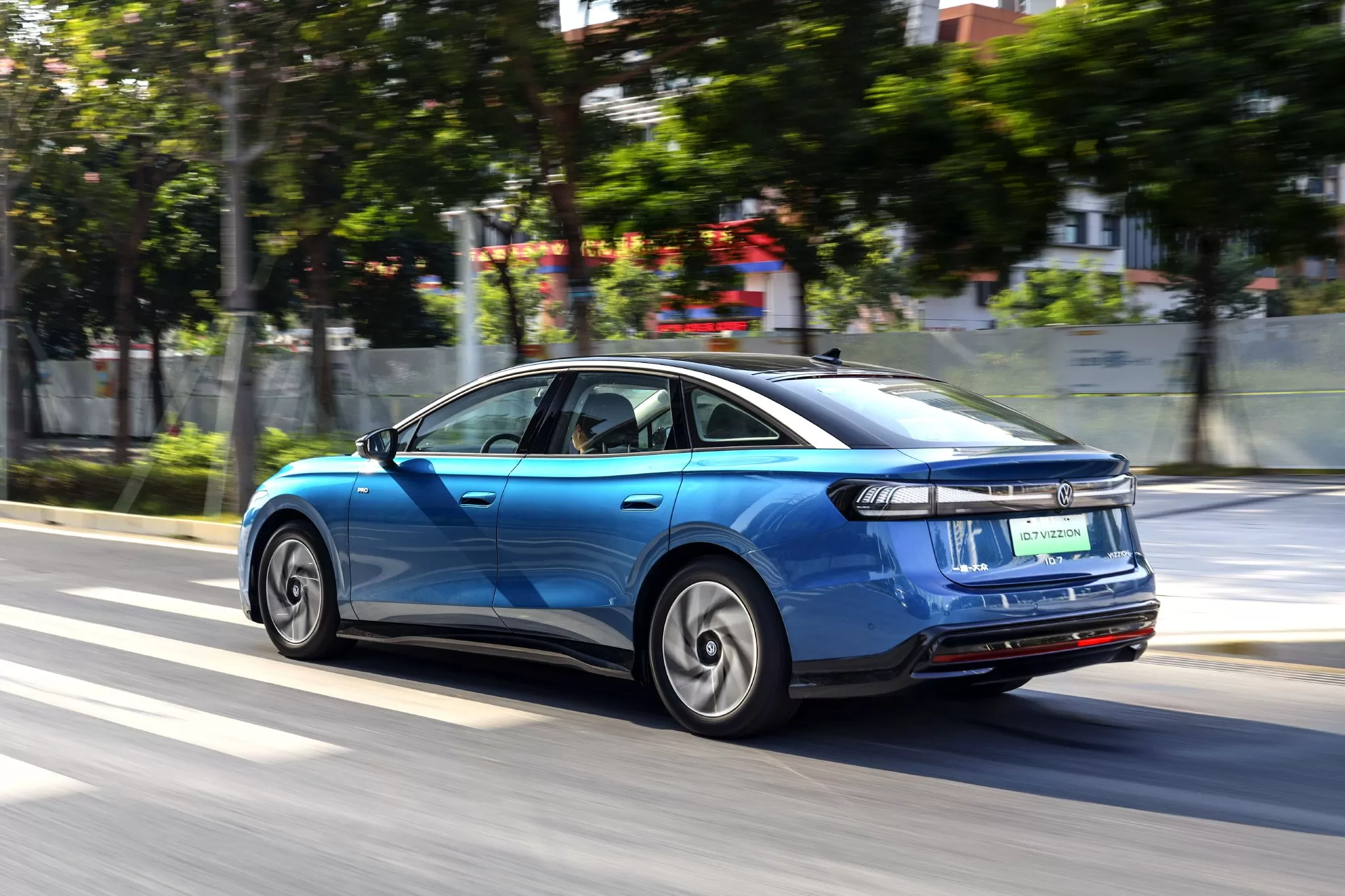
The chassis tuning style of ID.7 is still very mainstream, stable and solid. While filtering out most road bumps, it still retains a certain amount of road feel, and the steering wheel is precise without any play. The shock absorber damping setting is moderate, and the body roll control is in place during fast cornering. If you have driven or ridden in a Passat, then the chassis tuning of ID.7 is relatively heavier than the Passat.
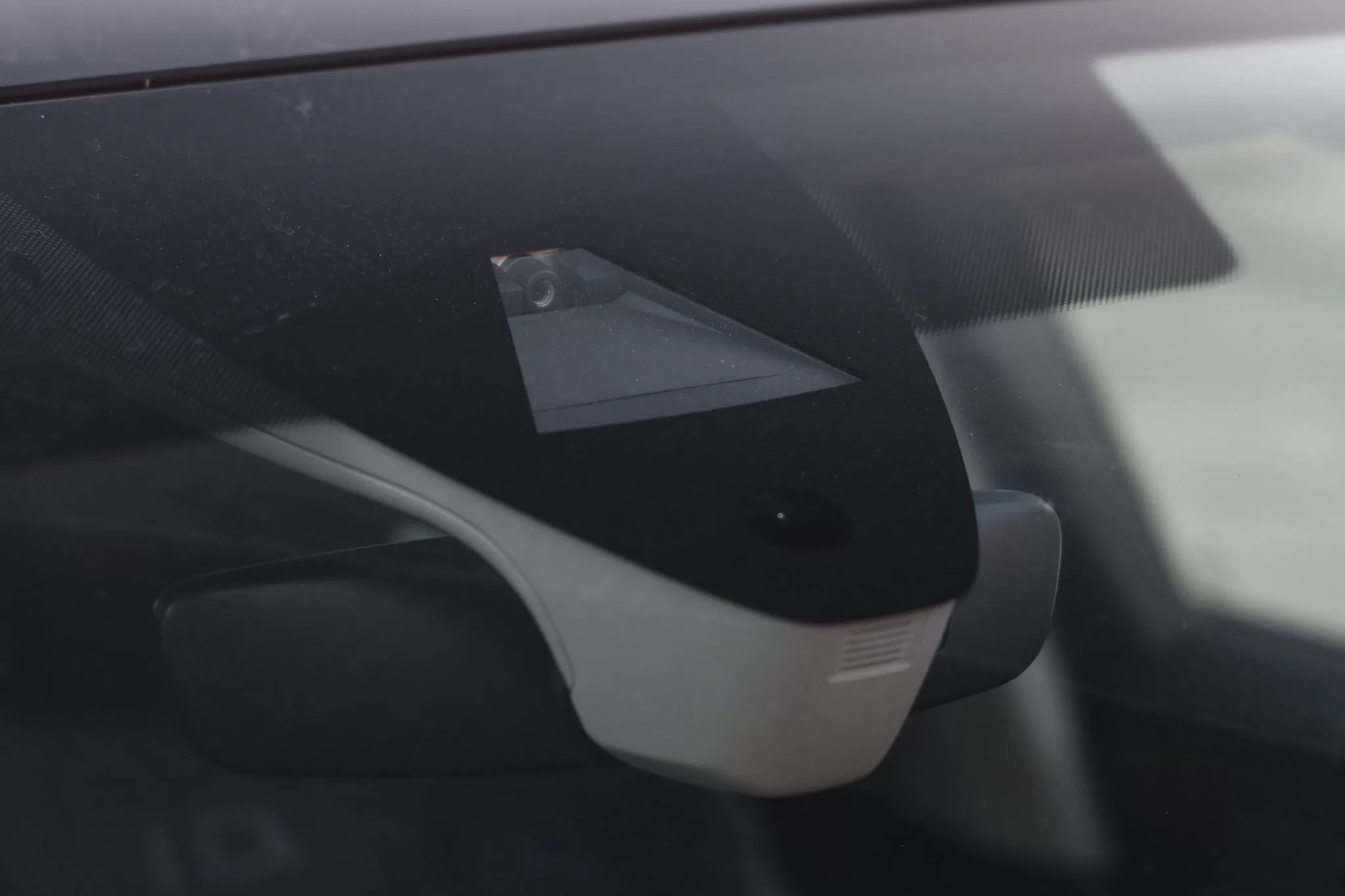
In terms of driving assistance, the ID.7 is equipped with a front windshield camera that enables AEB emergency braking within the speed range of 5km/h to 30km/h.
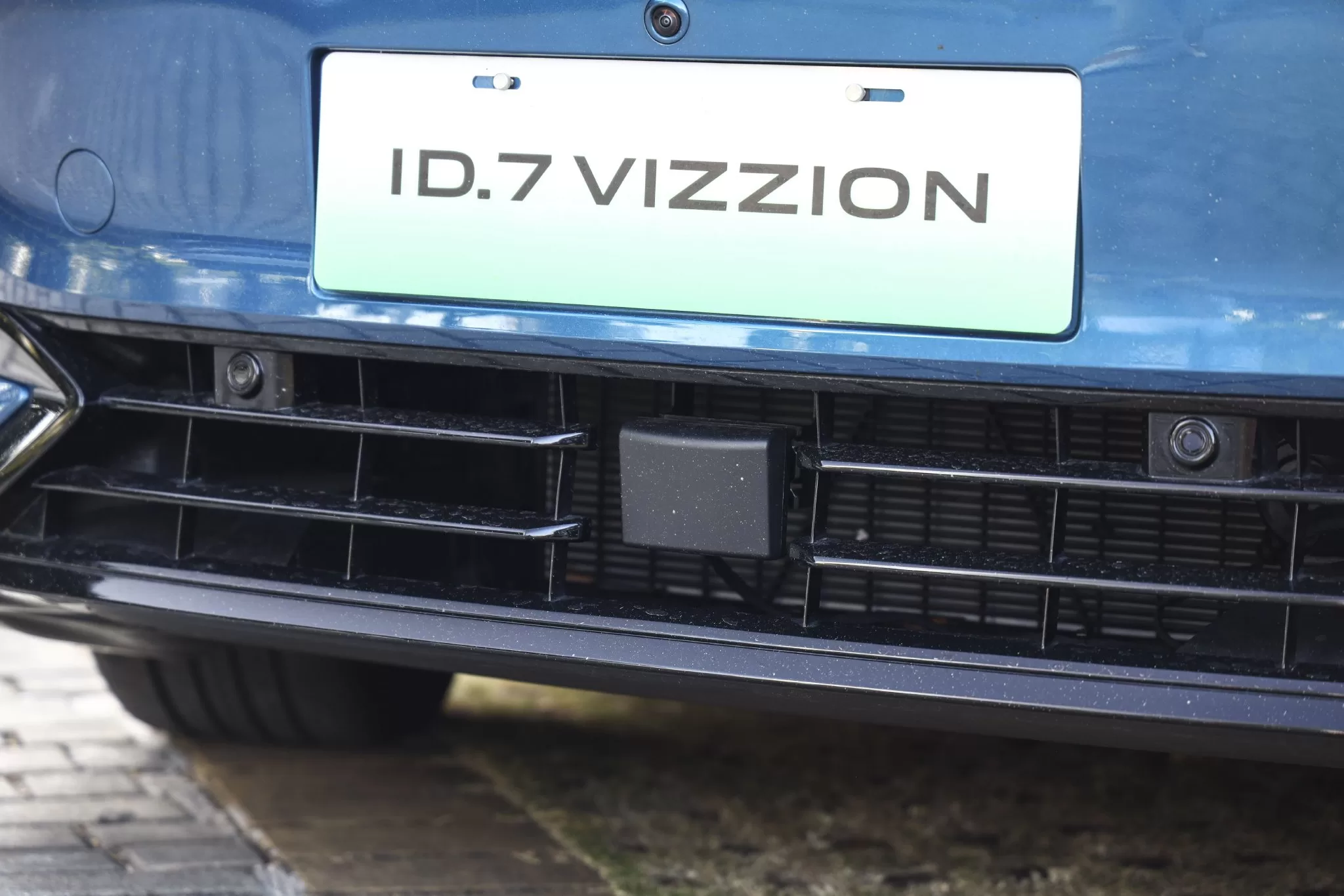
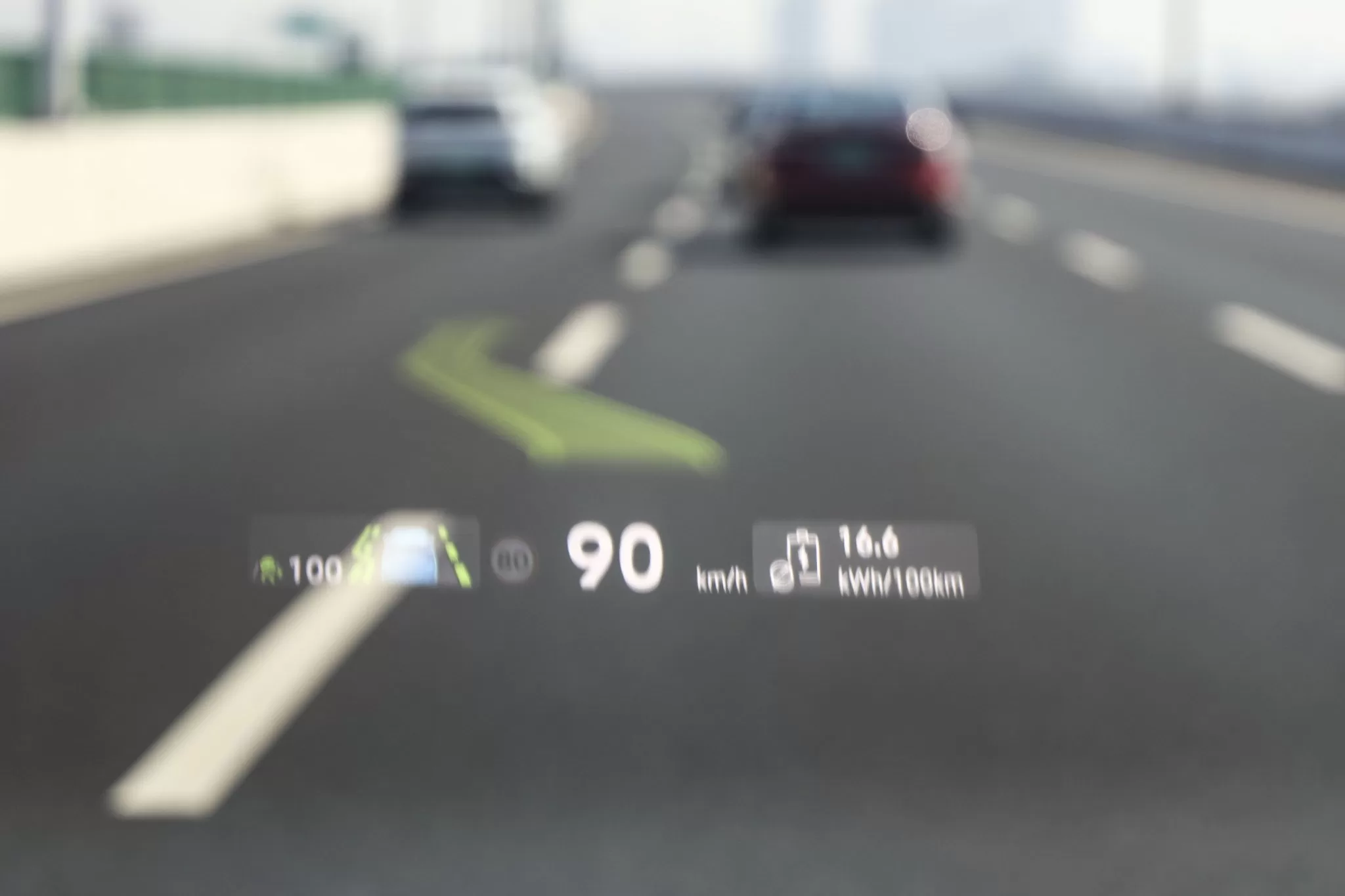
The ID.7 comes with Travel Assist 3.0 intelligent driving assistance system. When the L2 level driving assistance is activated, the system will judge whether the surrounding environment is safe, and will automatically complete the lane change at the appropriate time when the steering lever is turned. The first trigger condition for lane change by turning the lever is a speed of over 72 km/h, and after the first trigger, it can be used at a speed of over 64 km/h. In actual experience, the ID.7 can indeed achieve the lane change function in a safe surrounding, and the lane change action is relatively gentle, not aggressive.
In addition, in terms of parking, the ID.7 is equipped with IPA automatic parking assistance, which can achieve automatic parking in various scenarios such as horizontal and vertical parking. TPA training parking assistance can simulate parking training in the environment, and the system can store 5 routes to achieve automatic parking within a range of 50m at a maximum speed of 7 km/h.
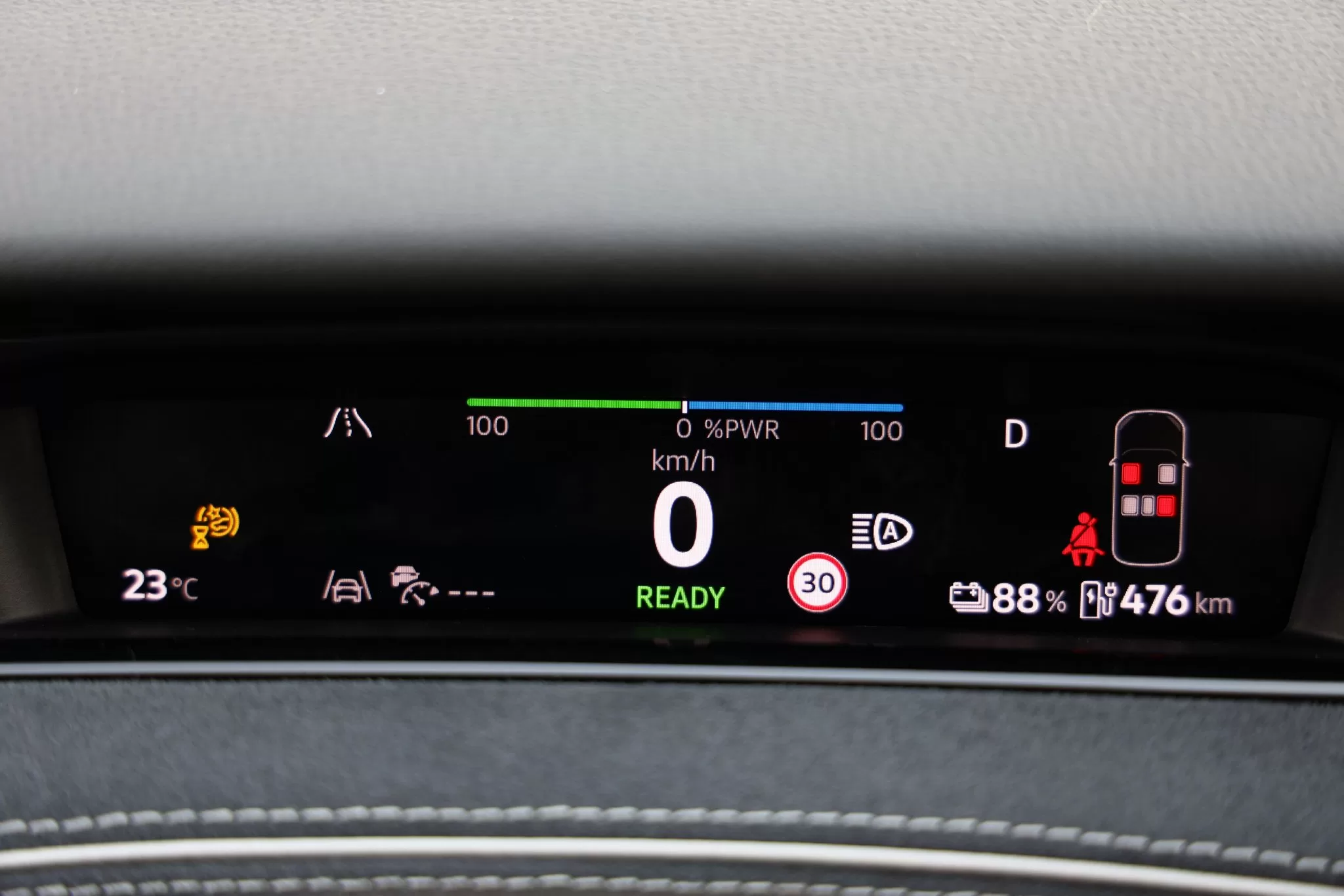
Before departure, the battery level is at 88% with a range of 476km. “Departing with 88% battery, capable of covering 476km on a single charge.”
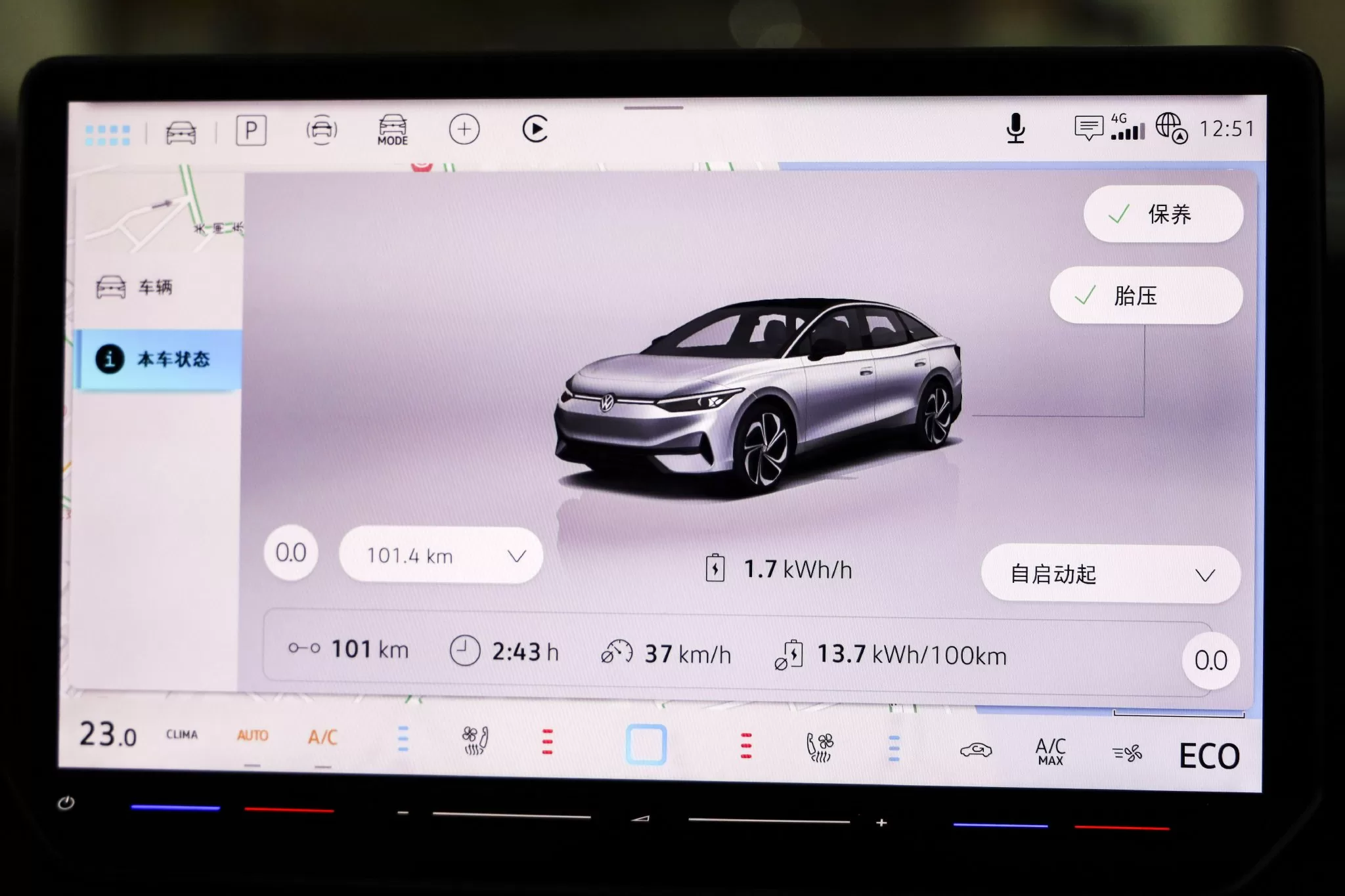
The entire journey is air-conditioned at 23℃ with an electric consumption of 13.7 kWh per 100 kilometers.

After driving 101 kilometers, the battery level is at 70% and the remaining range is 388 kilometers. Now let’s talk about energy consumption and charging. The test drive was conducted with the single-motor rear-wheel drive version. Before departure, the battery level was at 88%, with a remaining range of 476 kilometers. The air conditioning was set to 23℃ throughout the journey, with the fan speed at 2, and the “Eco” driving mode was used. 30 kilometers were driven on the highway, 60 kilometers on smooth city roads, and 10 kilometers in congested city traffic.
After driving 101 kilometers, the battery level was at 70%, with a remaining range of 388 kilometers, and the overall energy consumption was 13.7 kWh/100km. Roughly calculating, 18% of the battery was used to drive 101 kilometers, so the full range is estimated to be around 560 kilometers, which is more than enough for daily commuting needs. Additionally, the estimated range of the ID.7 takes into account factors such as vehicle speed and road conditions, making it very accurate and indirectly reducing range anxiety.
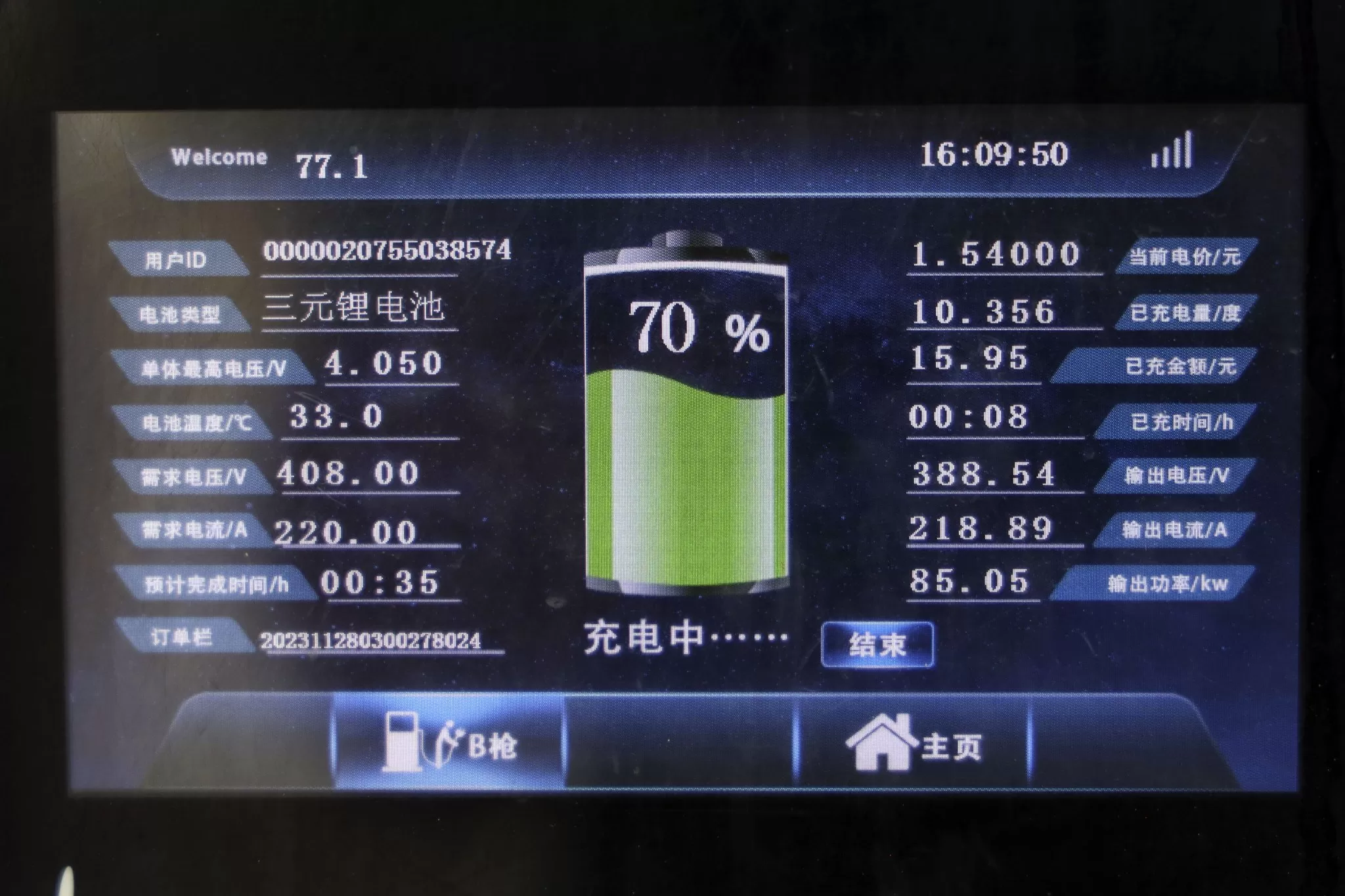
During this test drive, we also had a simple experience of the charging efficiency of the ID.7. At a public DC charging station, it took 8 minutes to charge 10 degrees of electricity, with a charging voltage of 388V and a charging power of 85kW. In addition, ID. users can also choose to replenish energy at Kai Maisi super charging station, and through the FAW-Volkswagen brand’s super APP, they can enjoy a series of VIP exclusive charging services at Kai Maisi brand exclusive super charging station, including free reservation of charging piles, plug and charge, seamless payment, and exclusive discounts on charging fees.
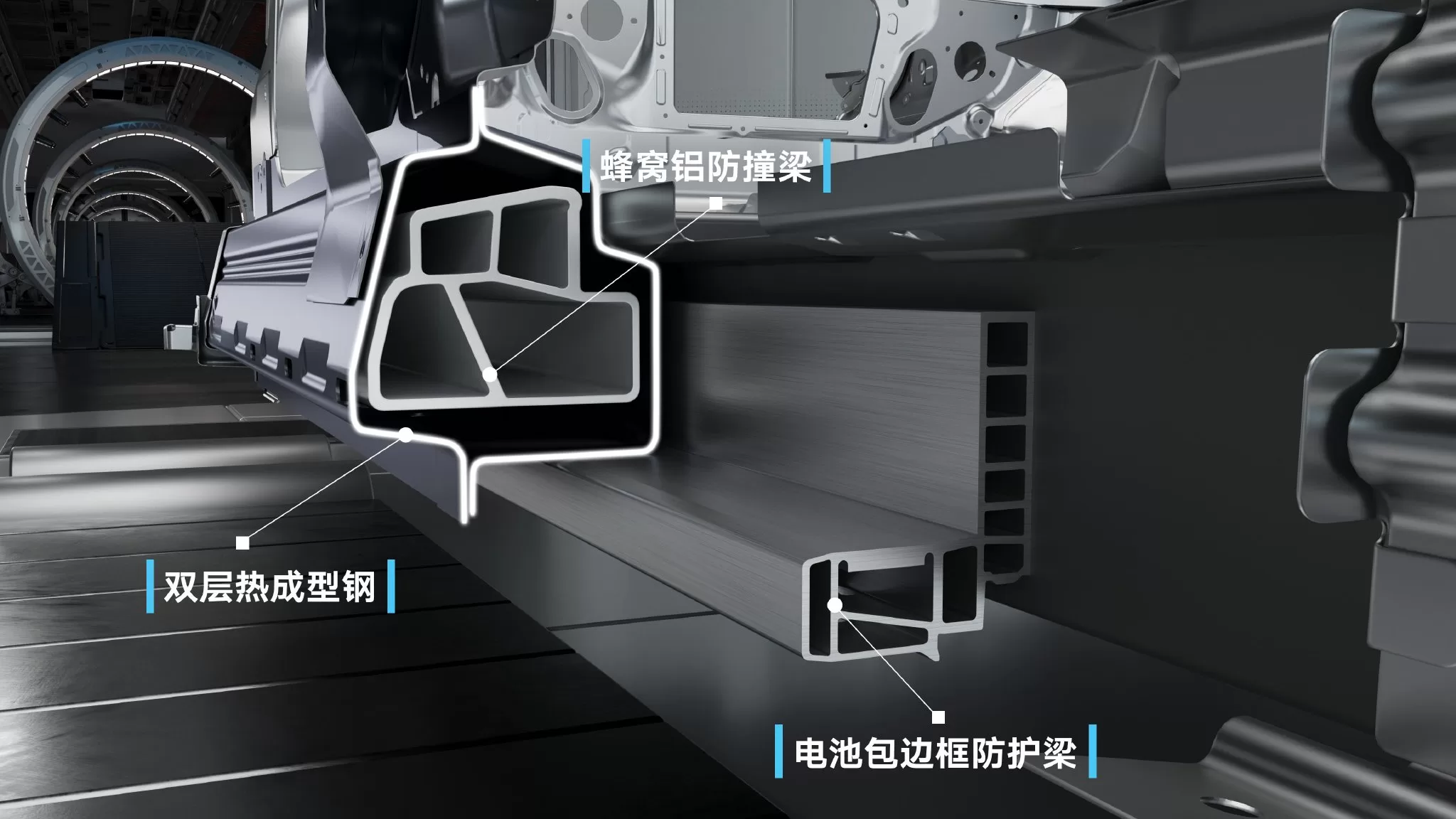
“Sandwich” Threshold Structure In terms of safety, the ID.7 adopts a high-strength steel-aluminum hybrid body, with hot-formed steel accounting for over 32% and high-strength and ultra-high-strength steel accounting for over 81%. The longitudinal beam reinforcements, four doors, and rear cover are made of aluminum alloy materials. It is particularly worth mentioning that the torsional stiffness of the body exceeds 46100Nm/degree.
“Sandwich” threshold structure: The “sandwich” structure of double-layer hot-formed steel and honeycomb aluminum reinforced beams, with a honeycomb aluminum cross-section width exceeding 150mm. When a side impact occurs, the irregular honeycomb-shaped compartment collapses from the outside to the inside in stages. In addition to the reinforcement of double-layer high-strength hot-formed steel inside and outside, it not only ensures the safety of the body but also provides 4-fold collision protection for the battery pack.
The overall collapse space can reach 250mm and can withstand over 120 tons of impact force, providing the most extreme safety guarantee for the battery and occupants. In addition, two reinforced cross beams are also built into the bottom of the body, using 2000MPa hot-formed materials to effectively resist side impacts, protecting the safety of the body and ensuring that the battery module remains undistorted during collisions, safeguarding the battery’s safety.
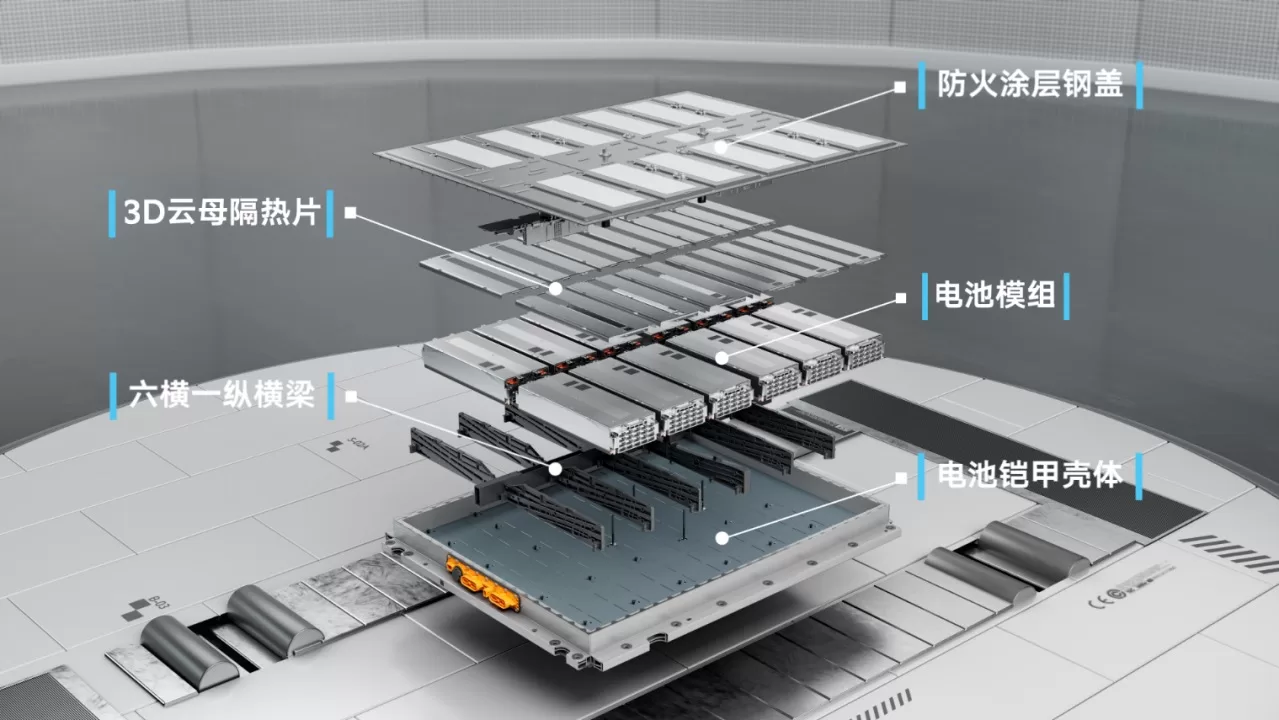
Four-fold battery thermal insulation structure In terms of battery safety, the ID.7 sets up a thermal insulation buffer zone between the battery cells and between the modules to reduce the risk of thermal runaway. In terms of thermal insulation design, an additional insulation coating is added on the basis of mica board insulation, which has the characteristics of not occupying space, low thermal conductivity, and high temperature resistance, which can ensure battery safety and save space. In addition to the “sandwich” threshold, in order to better resist side impacts, the ID.7 is equipped with an “armored” battery casing for the battery pack.
The battery module is wrapped layer by layer with a high-strength aluminum alloy frame composed of 12 aluminum cast beams, which can ensure that the impact force is absorbed layer by layer during the collision process. Each beam is independently designed to resist deformation for vehicle collision conditions, ensuring that the battery module does not deform during a collision and effectively resisting side impacts. The appearance of a call at first sight
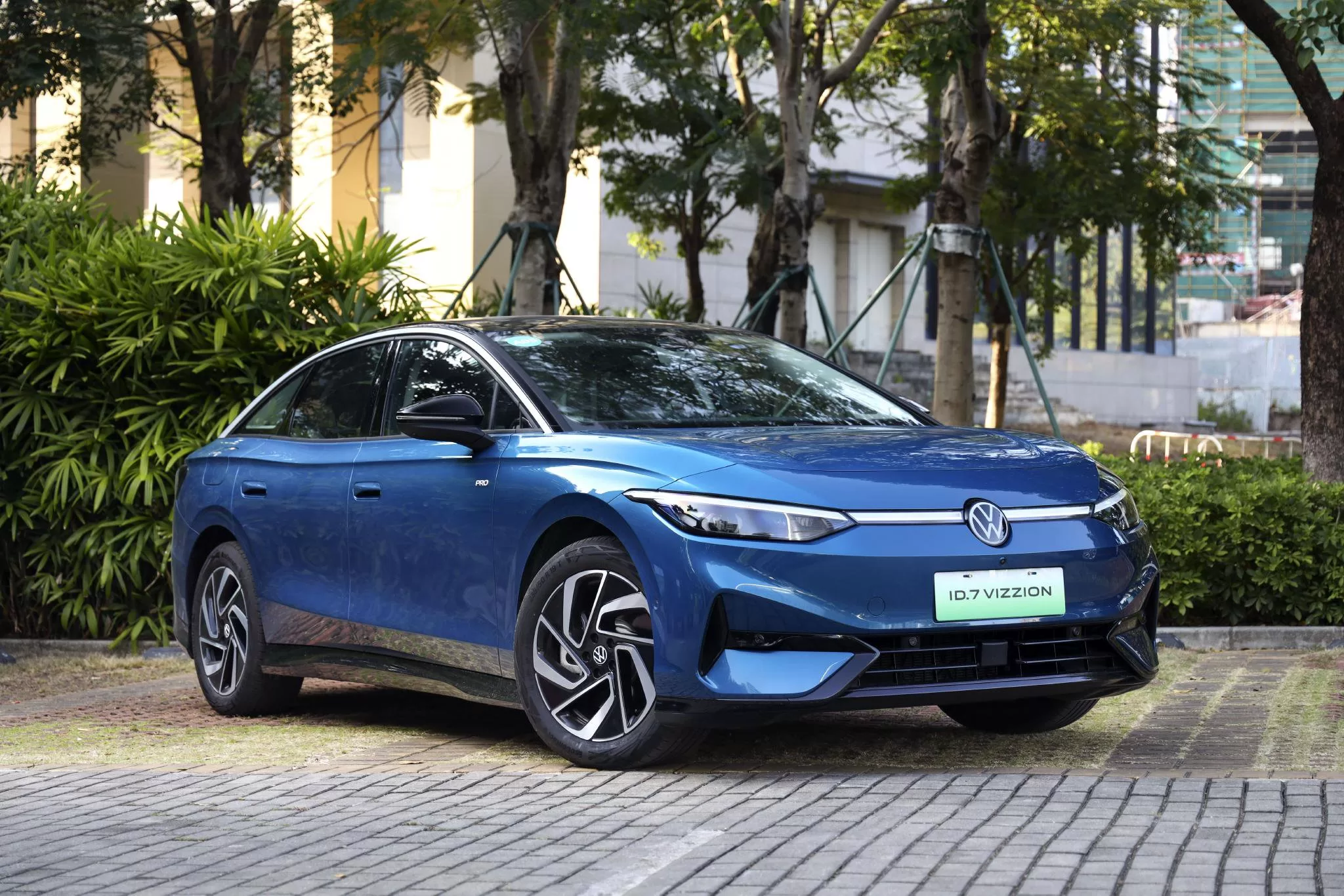
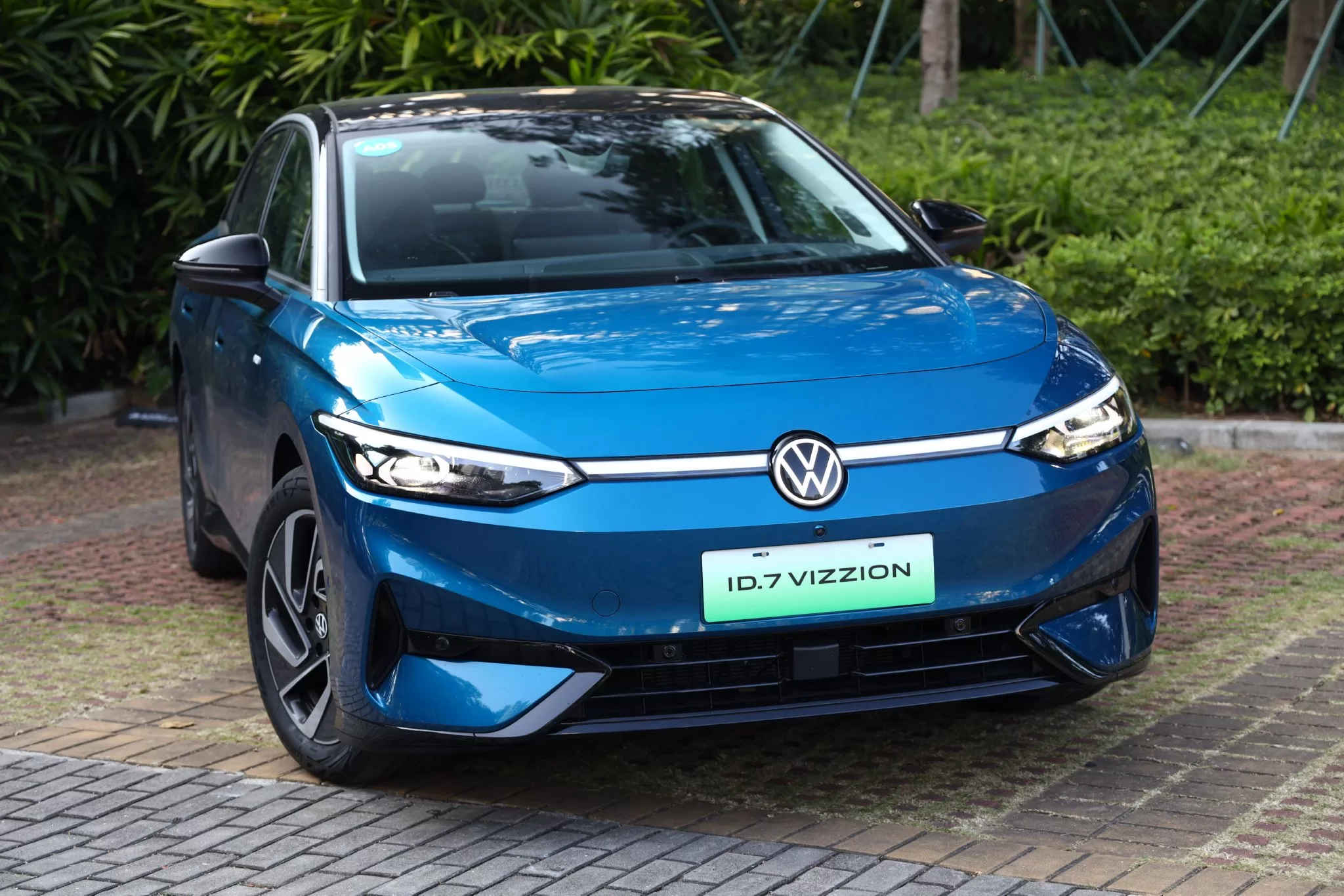
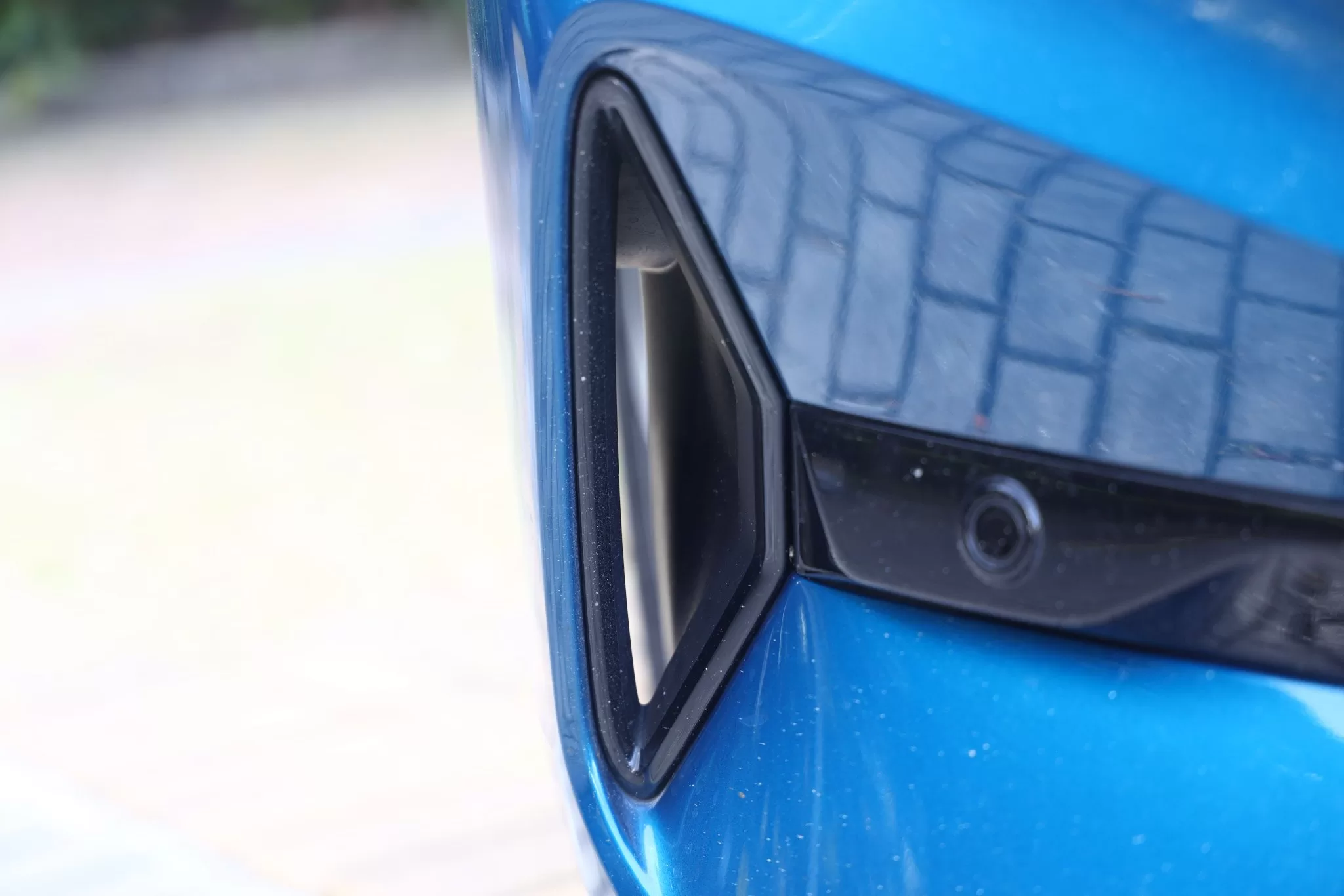

The ID.7 features a “dome-like” design, with steeply angled A-pillars and C-pillars to reduce wind resistance. Semi-hidden door handles, sleek body curves, and hollow air curtains on either side of the front face also effectively reduce wind resistance, resulting in a drag coefficient of just 0.23Cd for the entire vehicle.
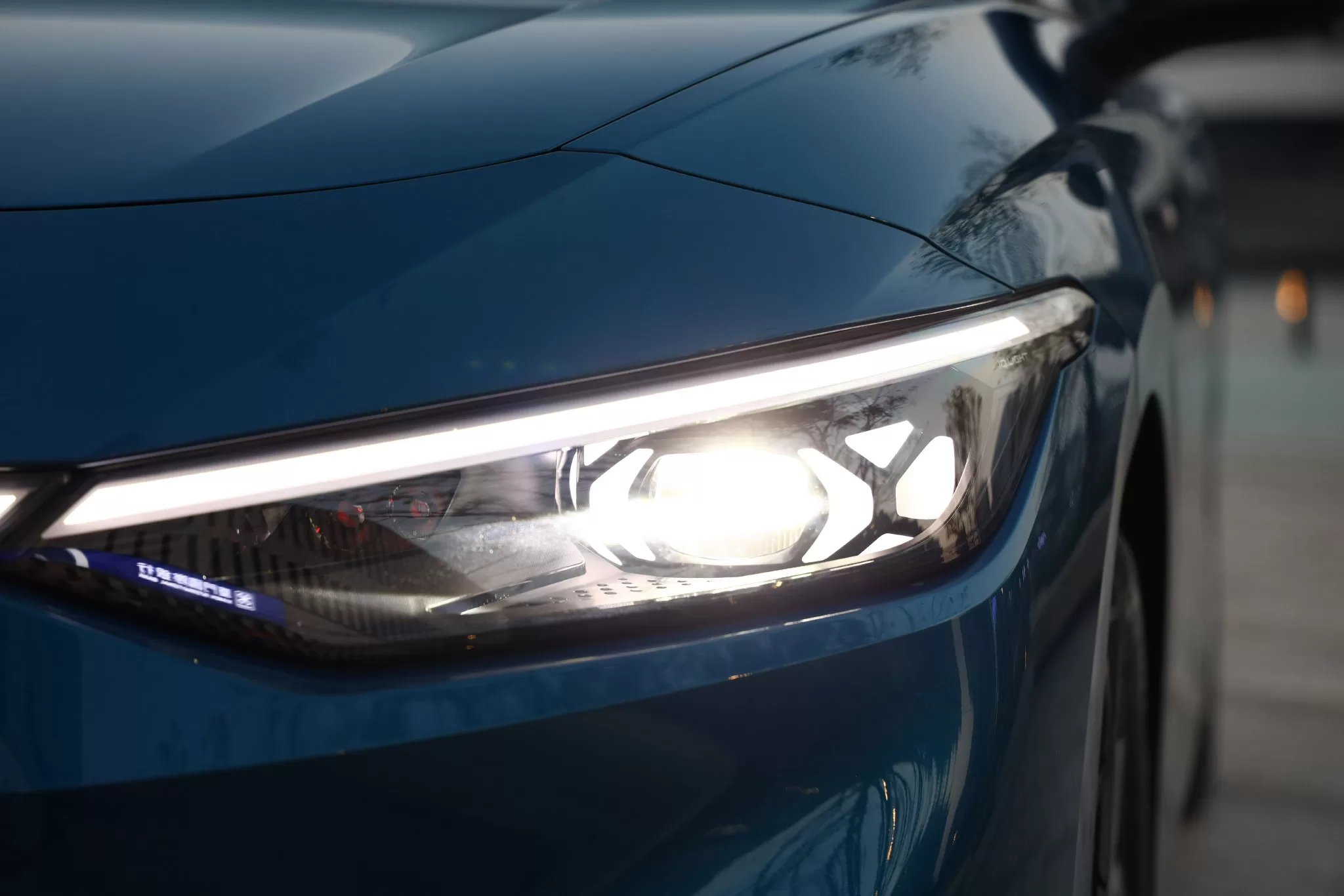
The integrated LED light strip and IQ Light LED matrix headlights create a low-slung sporty style, with the IQ Light LED headlights featuring a minimalist diamond-cut design. With 110 individual light emitting units, the precise light distribution allows for the full use of high beams without affecting other traffic participants in the same or opposite direction.


Thanks to the flexibility of the MEB platform, the ID.7 retains a short front overhang while appropriately extending the rear overhang design, resulting in a more coordinated body proportion and a more elegant and dynamic side profile. The dimensions of the ID.7 are 4956mm in length, 1862mm in width, and 1537mm in height, with a wheelbase of 2965mm. Despite being a B-class vehicle, it has a wheelbase comparable to that of a C-class vehicle, which is a prime example of the flexibility of the MEB platform.
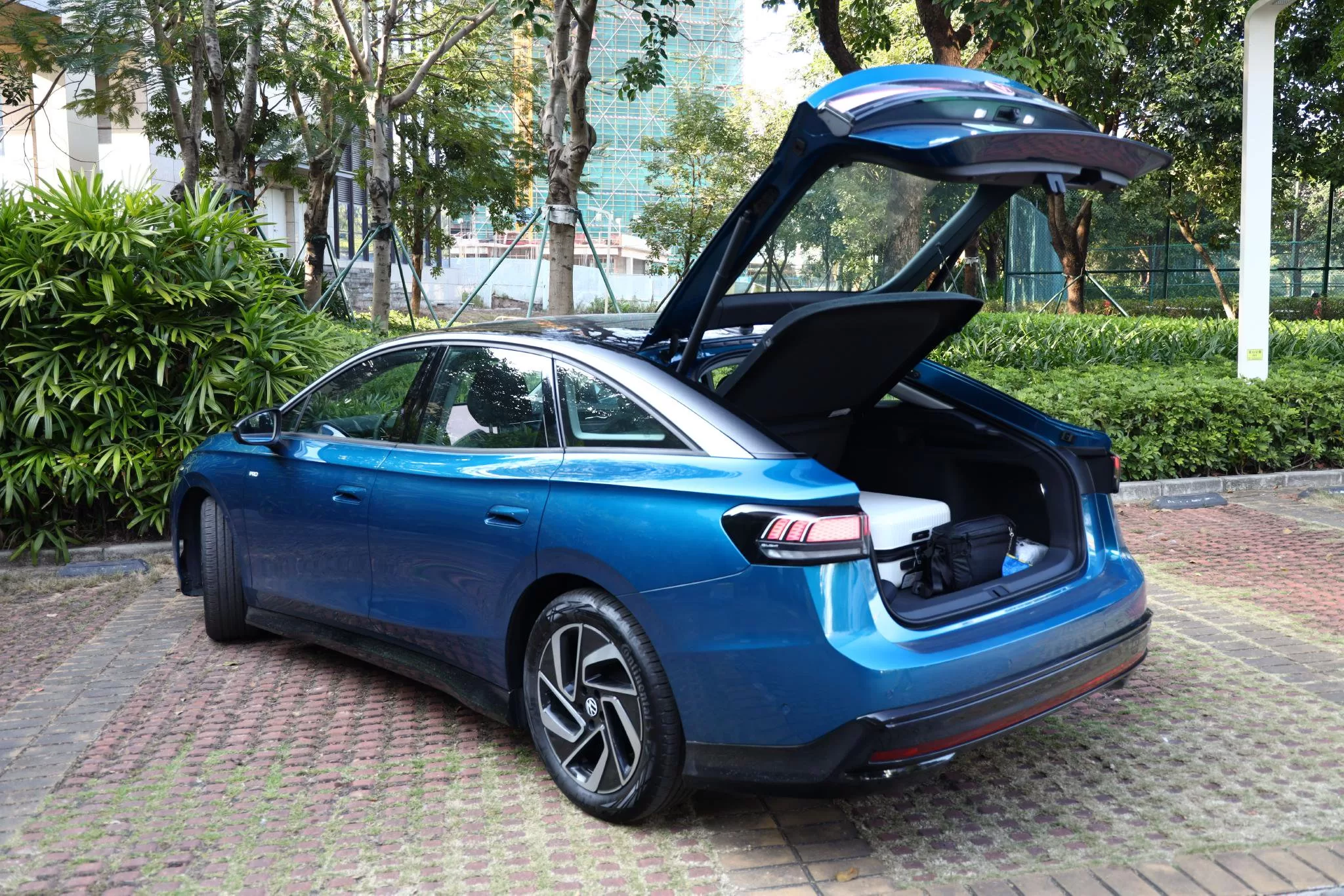
It adopts a liftback design, which looks more like a sedan overall, while also providing a larger trunk space. The black floating roof combined with black side skirts visually lowers the height and elongates the car, making the whole vehicle more dynamic.
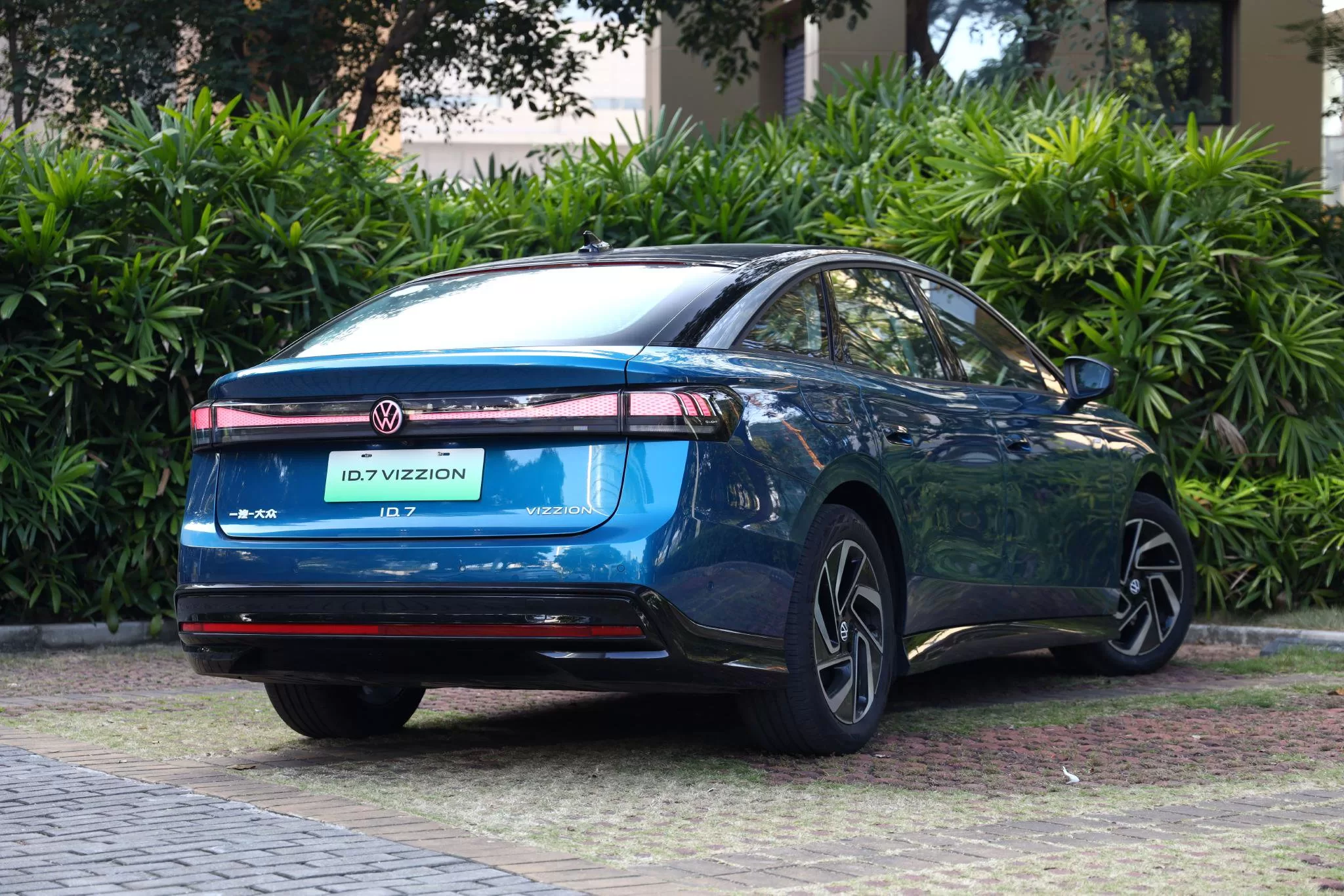
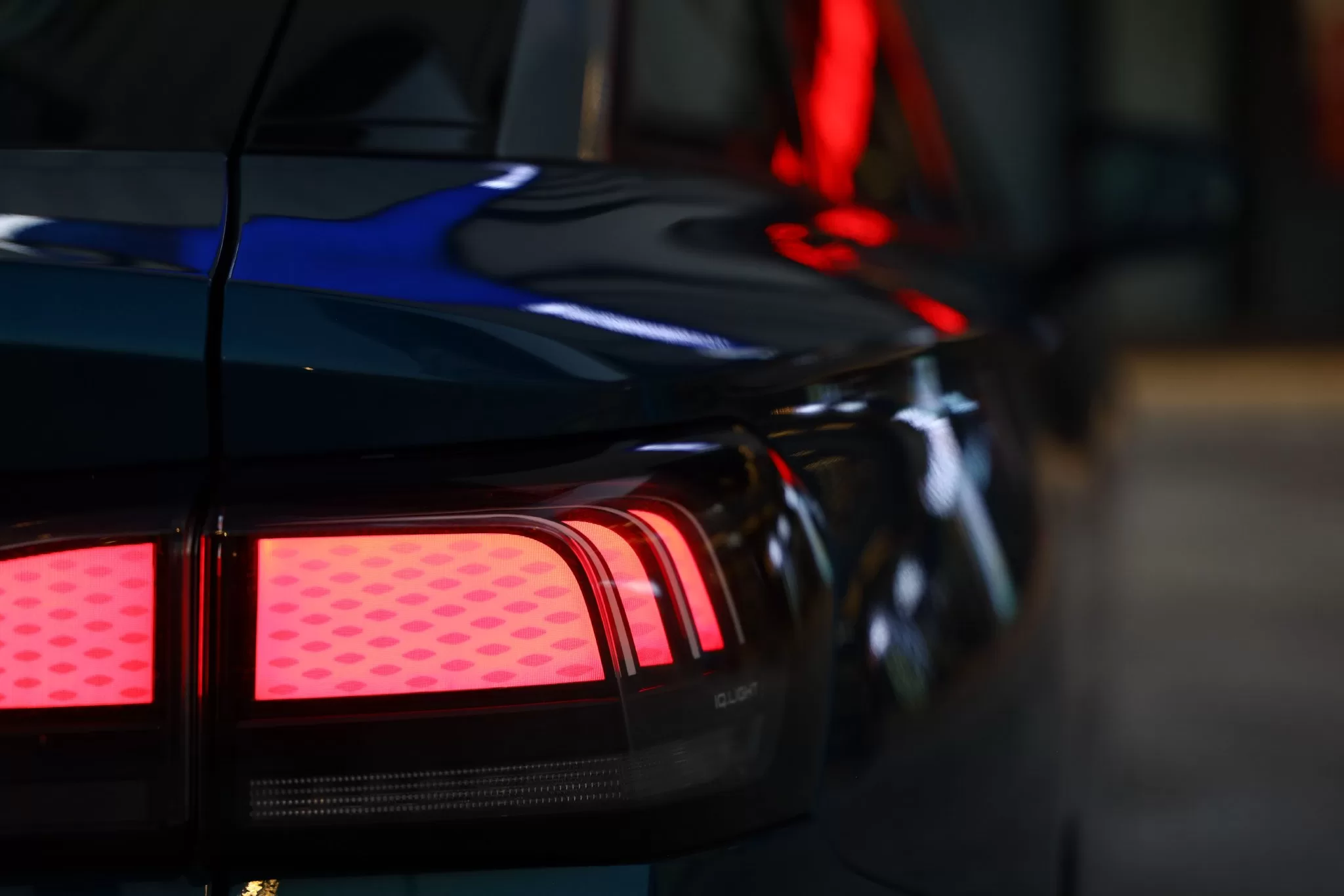
The biggest highlight of the rear end is the through-type taillights, as well as the two-sided taillights with a three-layer stacked three-dimensional structure. When the lights are on, they light up layer by layer, giving a more layered feel. In summary, the overall exterior design of the ID.7 still maintains Volkswagen’s stable style, but it also has some sporty designs. Compared to the mainstream split-type headlights and fully enclosed front face of current electric vehicles, the ID.7‘s appearance is not radical and is more easily accepted by most consumers. Simple yet sophisticated interior design.
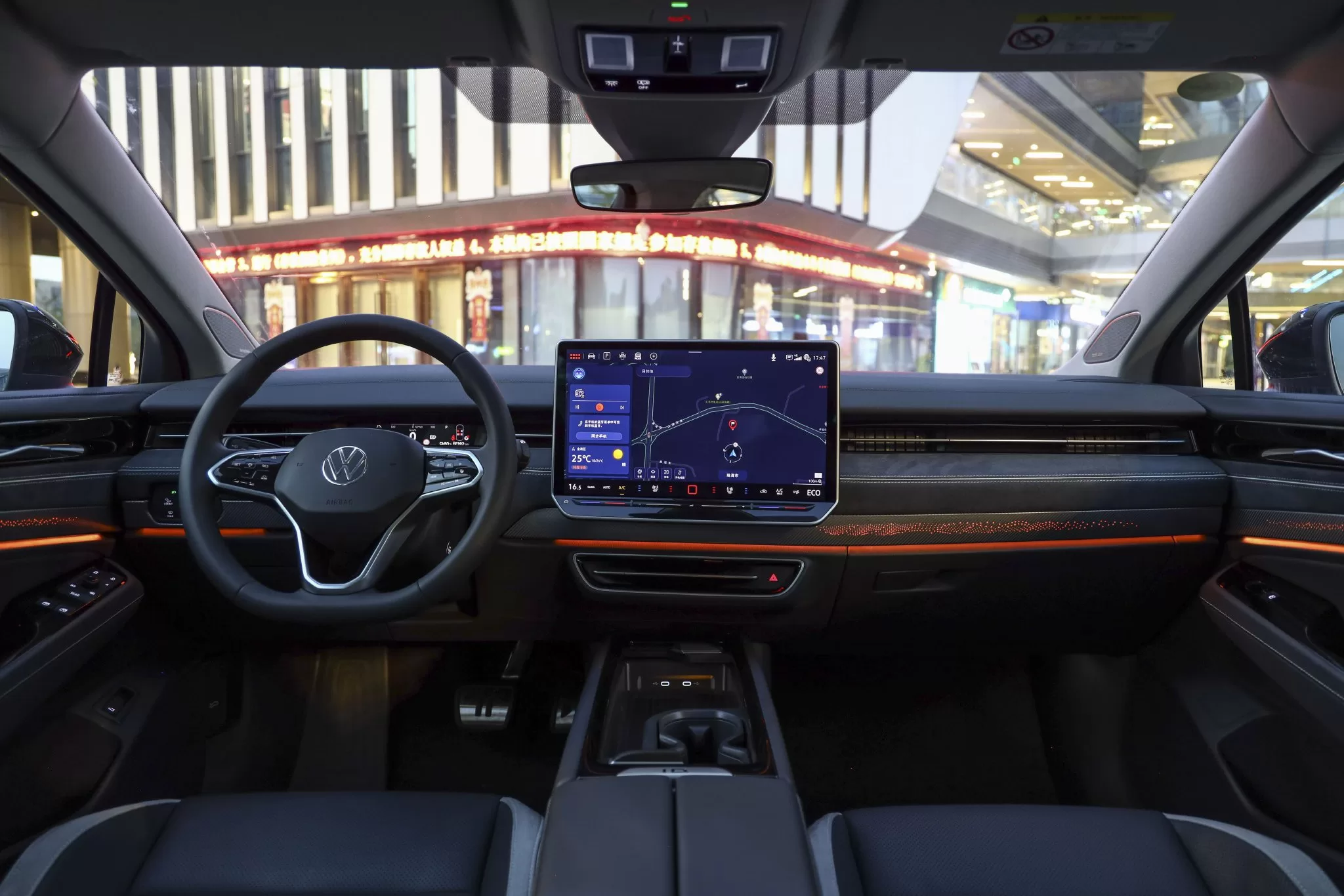
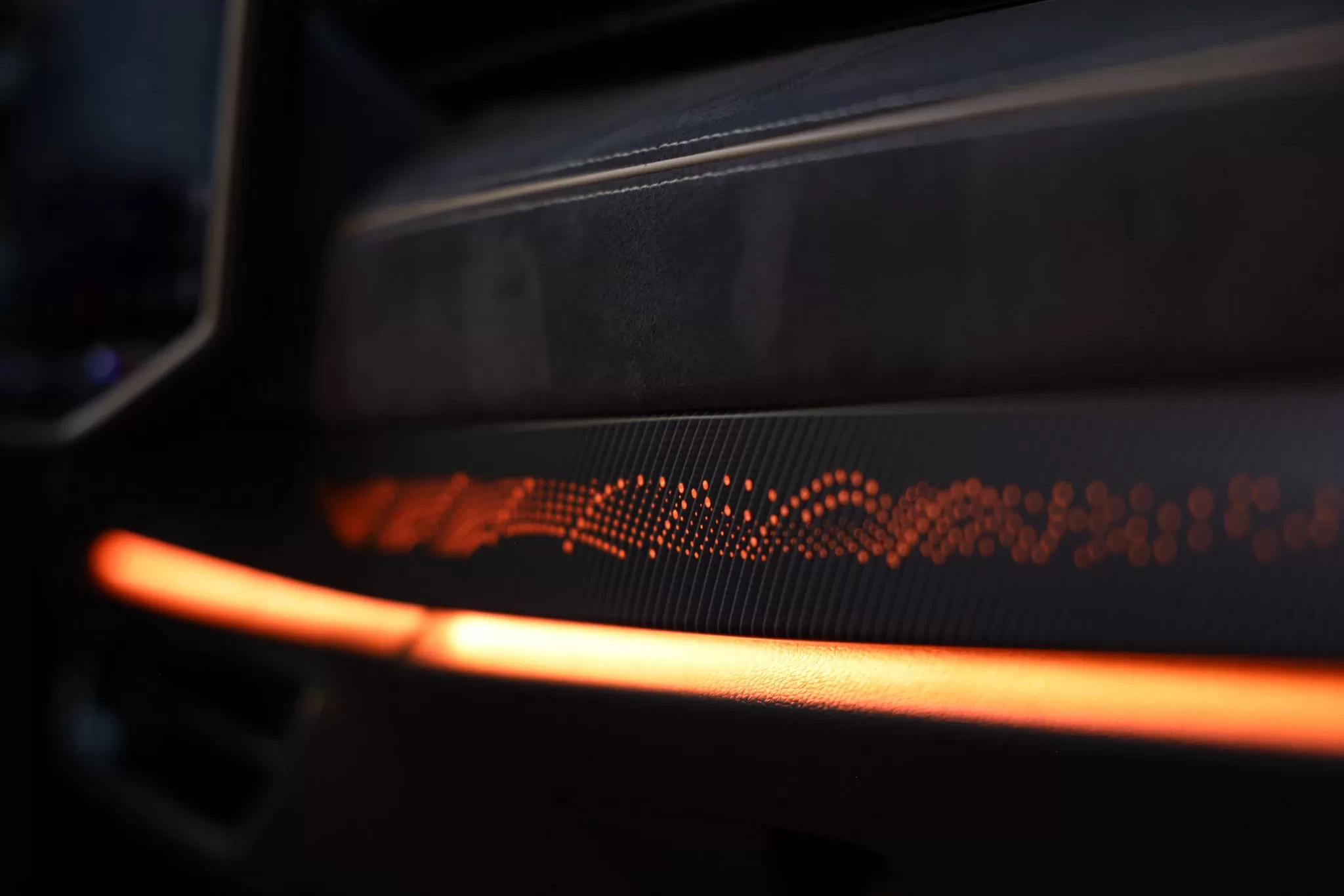
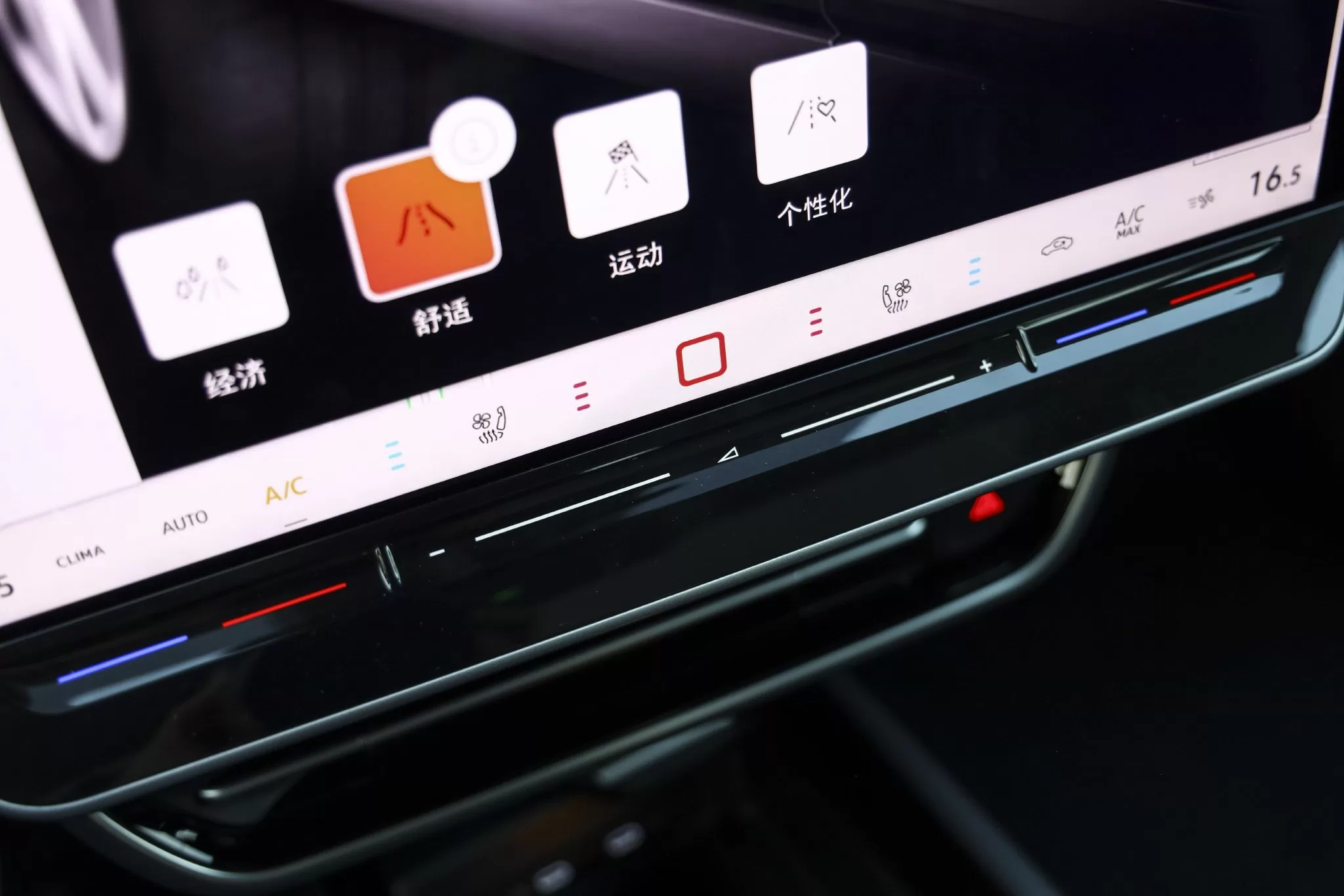
Air conditioning temperature and volume touch bar
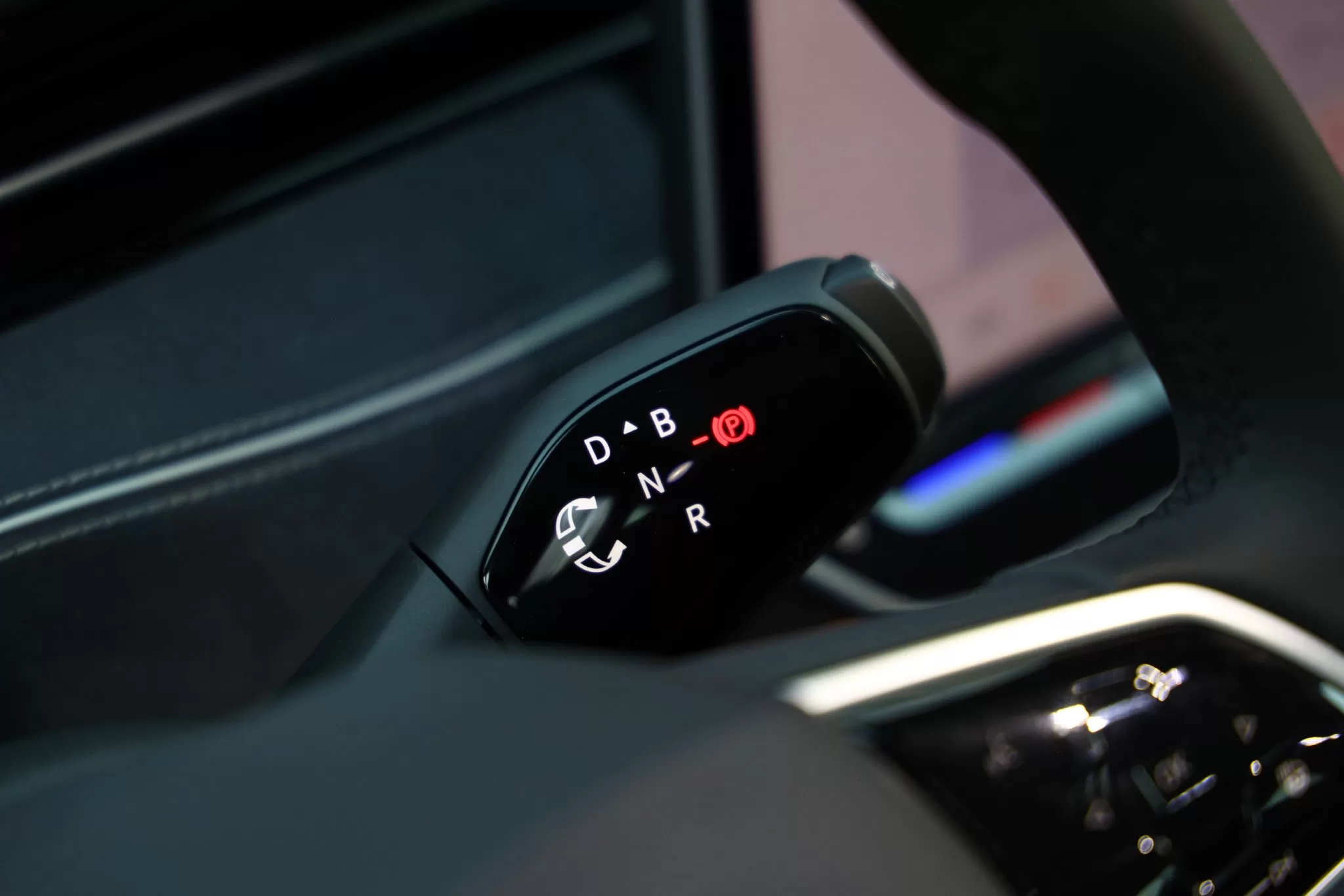
The interior of ID.7 gives a very refreshing feeling: the design of the shift lever makes the traditional gearshift area more concise; at the same time, it eliminates mechanical physical buttons, making the center console more simple; the hidden air vents make the overall interior feel stronger. In addition, the 30 colors of ambient lighting and INS laser light strips complement each other, creating a full interior atmosphere.
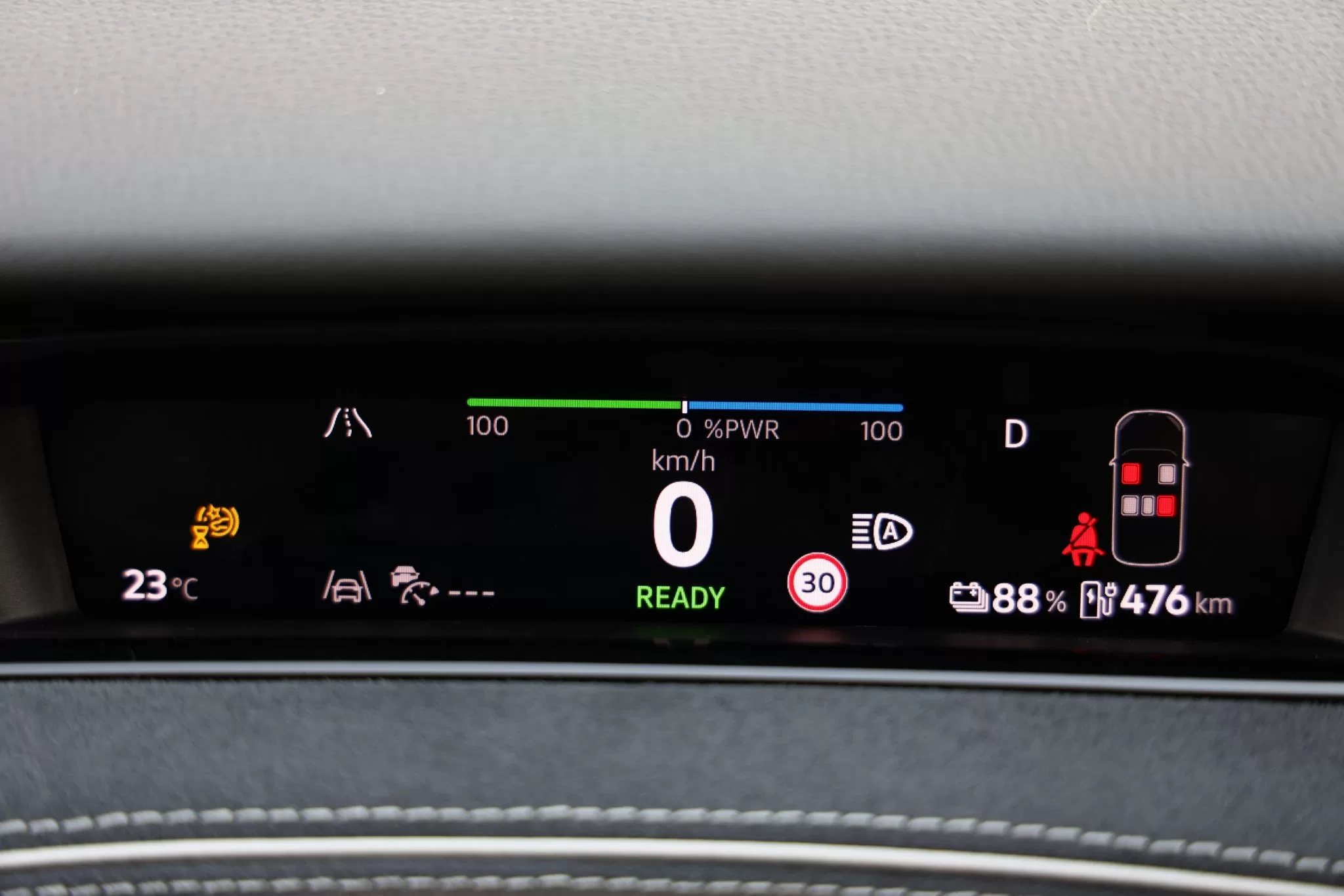
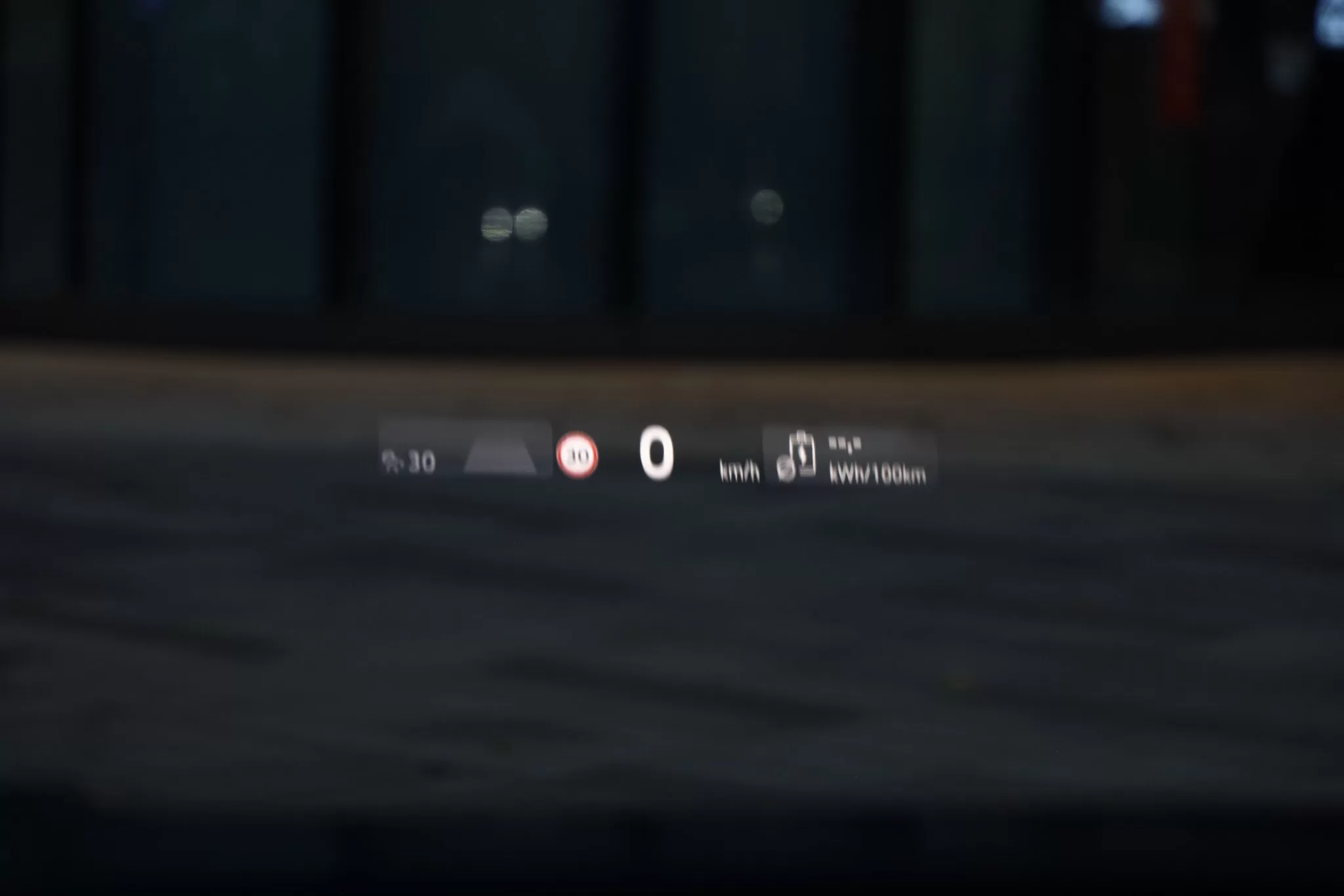
Standard AR HUD across the entire lineup.
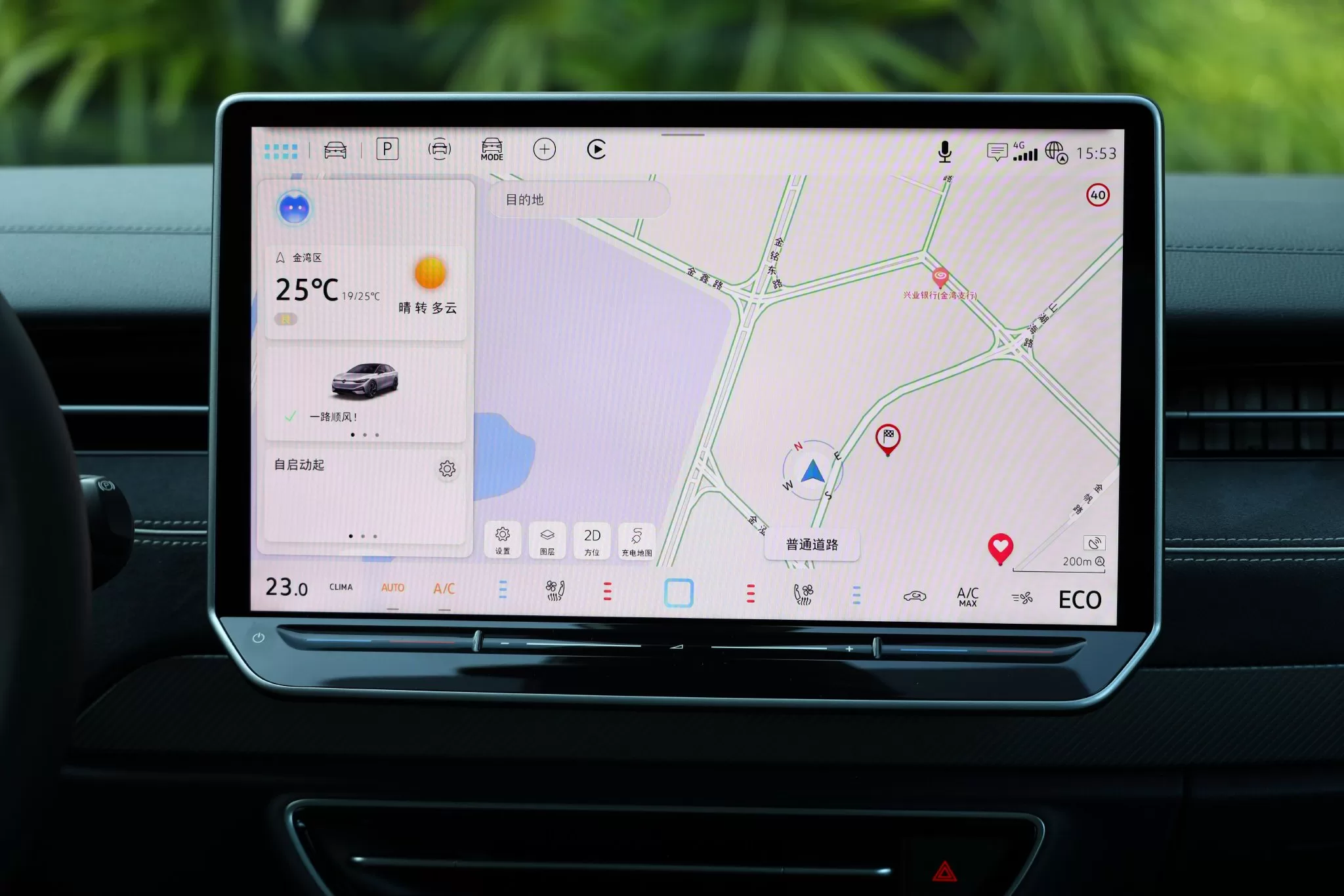
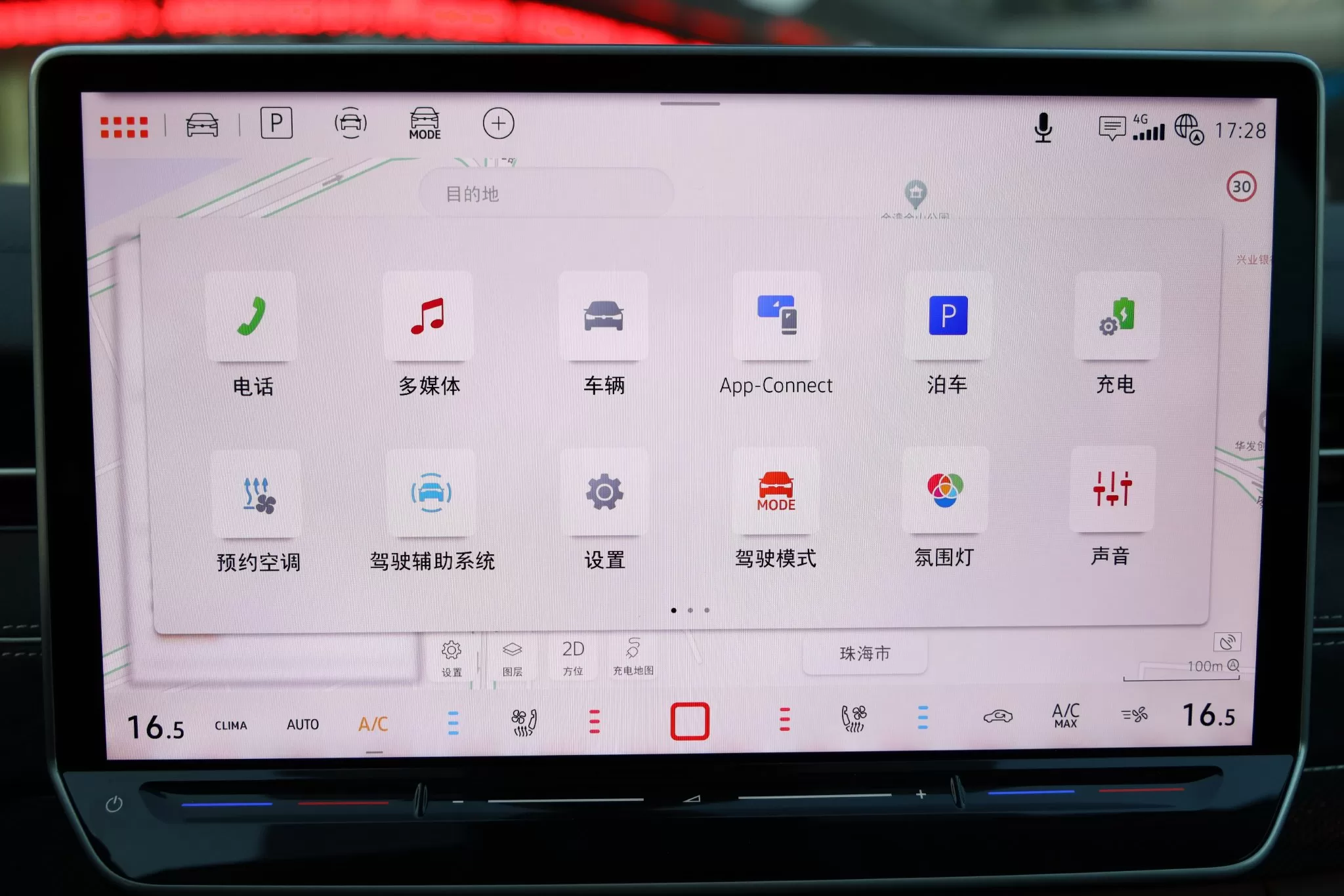
The ID.7 is equipped with a 15-inch intelligent 2K floating screen, featuring an integrated design and anti-reflective coating technology with a resolution of 2240*1260, which not only reduces fingerprint residue but also reduces blue light, making it more eye-friendly. In addition, the all-new generation of the ID. OS 2.0 car operating system features a flat UI design that is easy on the eyes and easy to find various functions.
The navigation interface has been optimized for the domestic market, with full-screen navigation display and support for lane-level navigation. New features include voice avatars and customizable cartoon avatars and voices. In terms of voice control, it adopts the AI-powered iFlytek voice solution, which provides intelligent recommendations for various scenarios and supports wake-up sounds for both the main and co-pilot, visible speech, continuous conversation, and contextual semantic understanding.
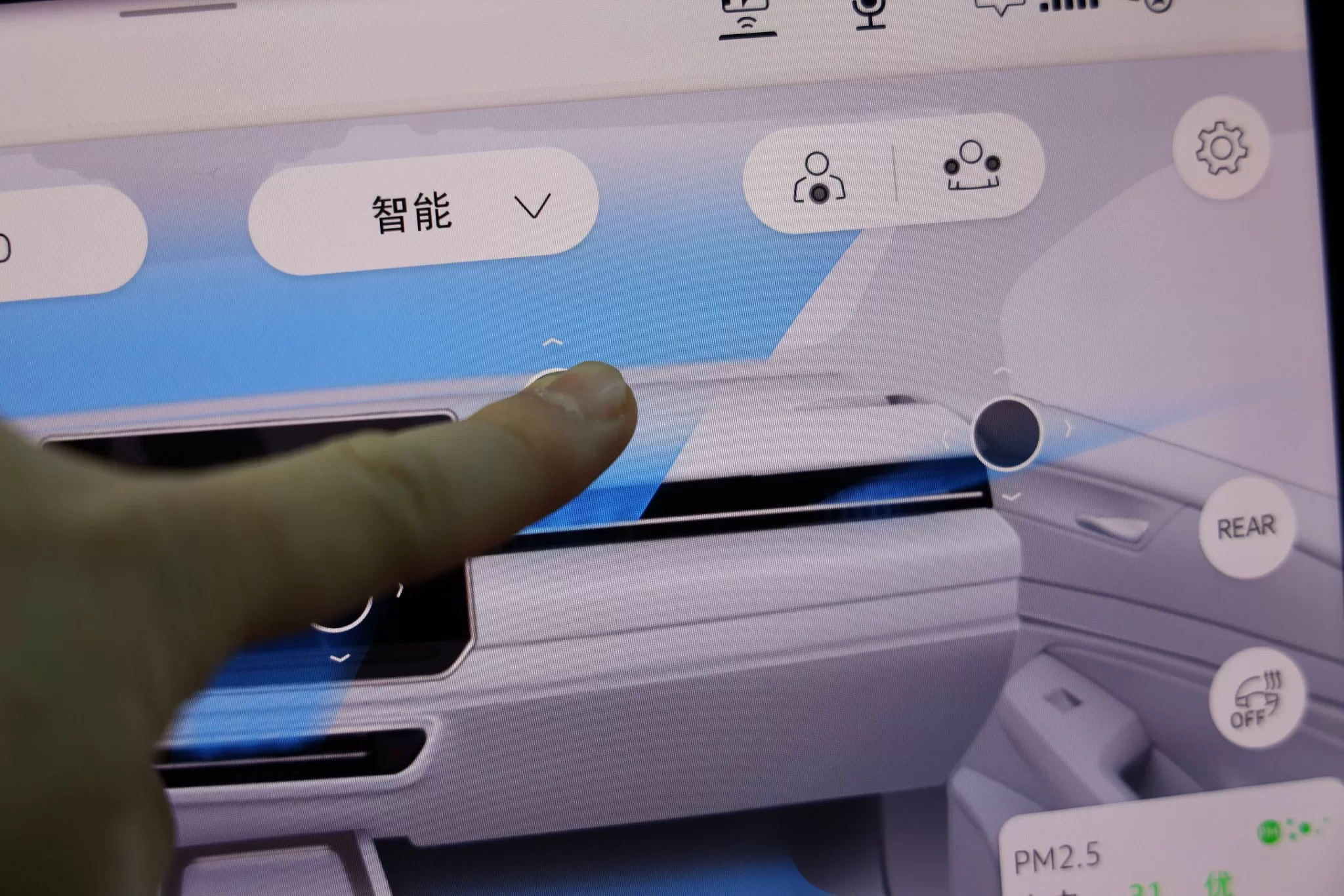
It is worth mentioning that the Smart Air hidden smart air conditioner has high playability. Its air outlet is electronically controlled and can adjust the direction of the air outlet by dragging the car machine. It also has a certain degree of intelligence because of the electric adjustment. It can automatically recognize the light environment, humidity environment, and temperature environment in the car, and intelligently control the air volume according to the light and temperature, and intelligently open to prevent fogging and frost according to the humidity and temperature. For example, if the sun shines directly on the co-pilot, the air outlet of the co-pilot’s air conditioner will automatically adjust to the far right, blowing near the window.

Wireless charging for mobile phones
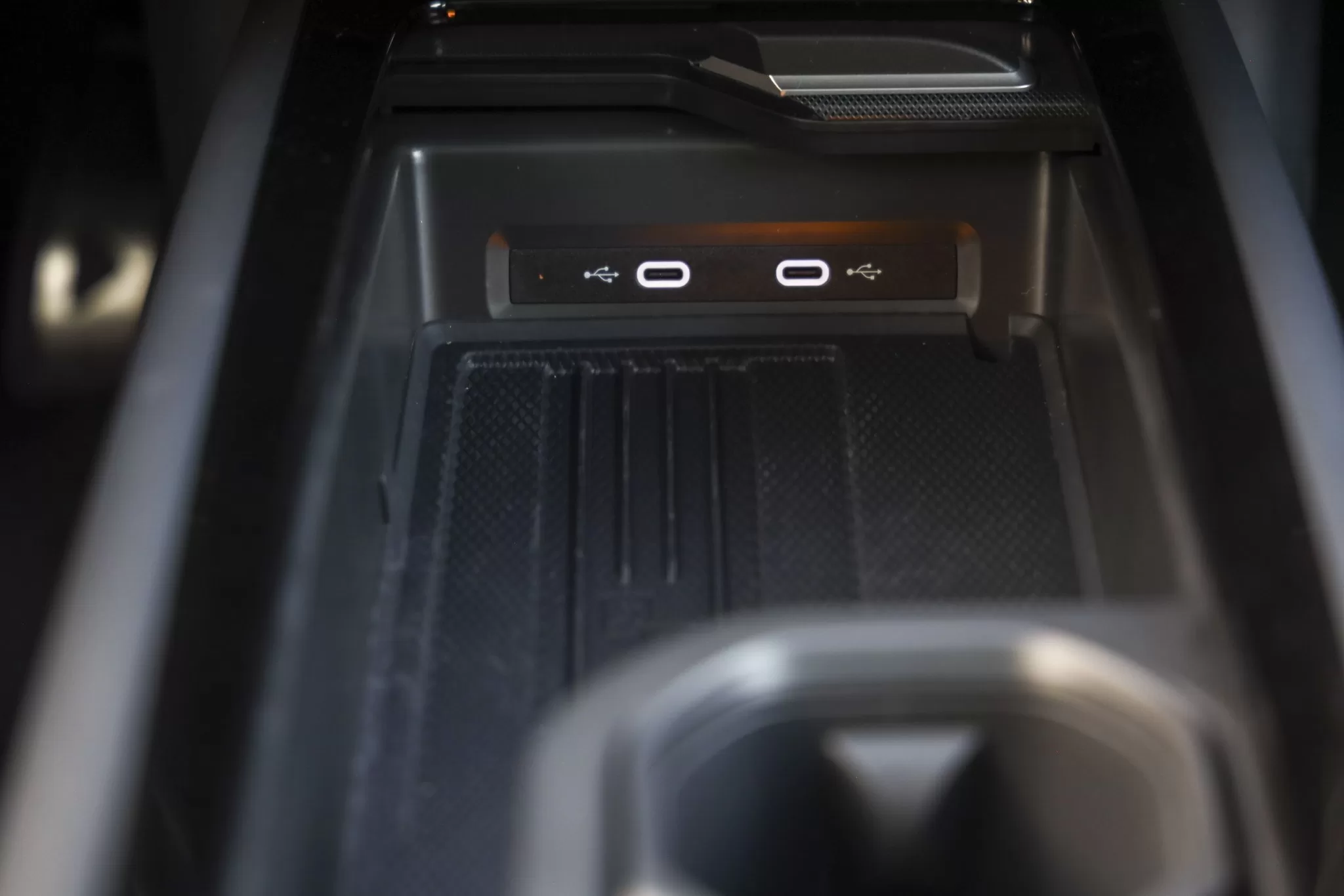
The vehicle has a total of 4 USB-C charging ports. The car is equipped with 4 USB-C charging ports.
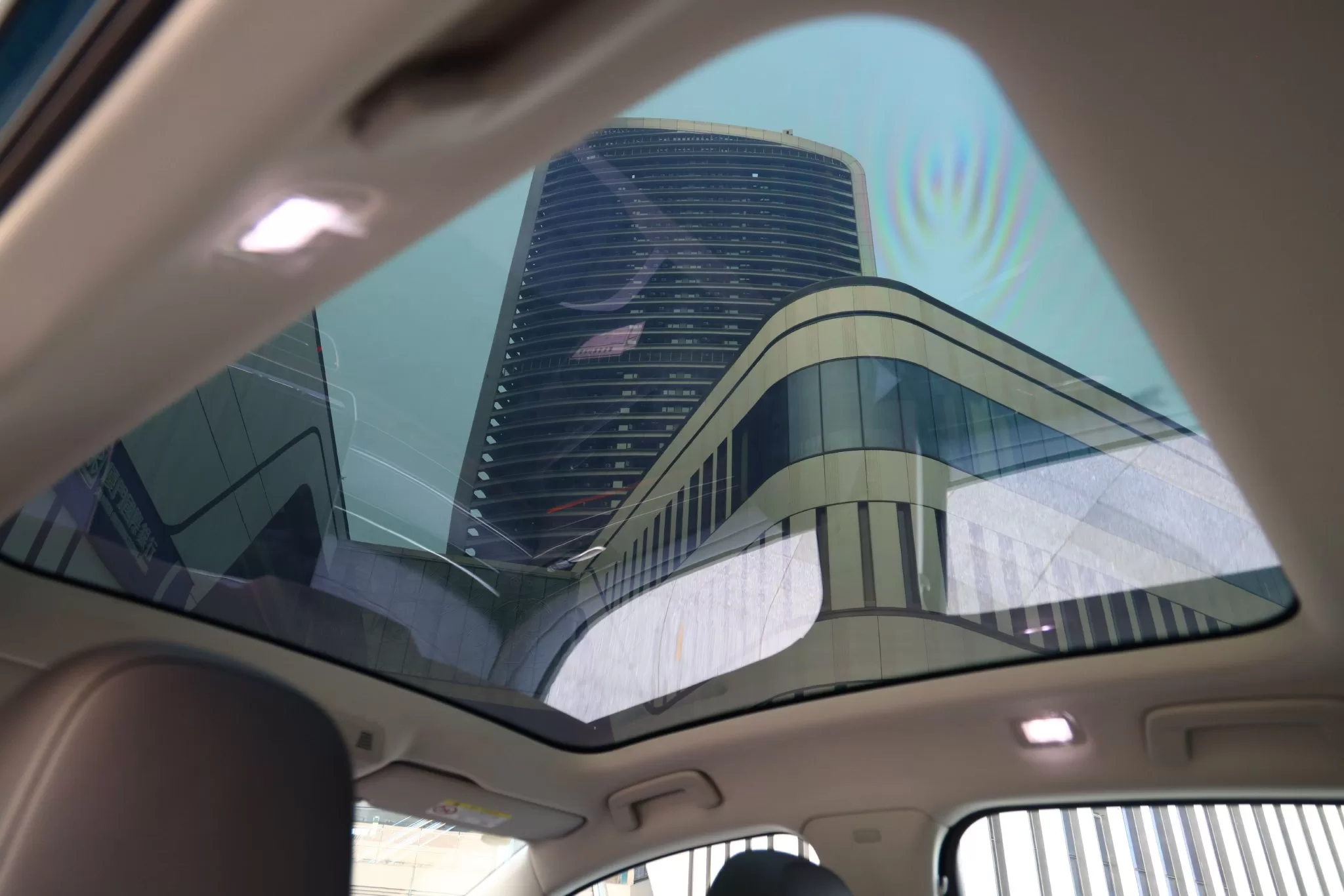
Intelligent Light-Sensing SkyView Canopy The SkyView intelligent light-sensing canopy can adjust brightness through its built-in PDLC film. When the canopy is open, it has a haze level of over 95% and also features sensitive color adjustment, millisecond-level response, and no noise. With its 7-layer canopy structure, it achieves a heat insulation rate of over 83% and a UV blocking rate of over 99.9%. From actual experience, even in the scorching midday sun, the glass of the skylight only reaches a slightly high temperature, far from being too hot to touch. A Surprisingly Pleasant Space
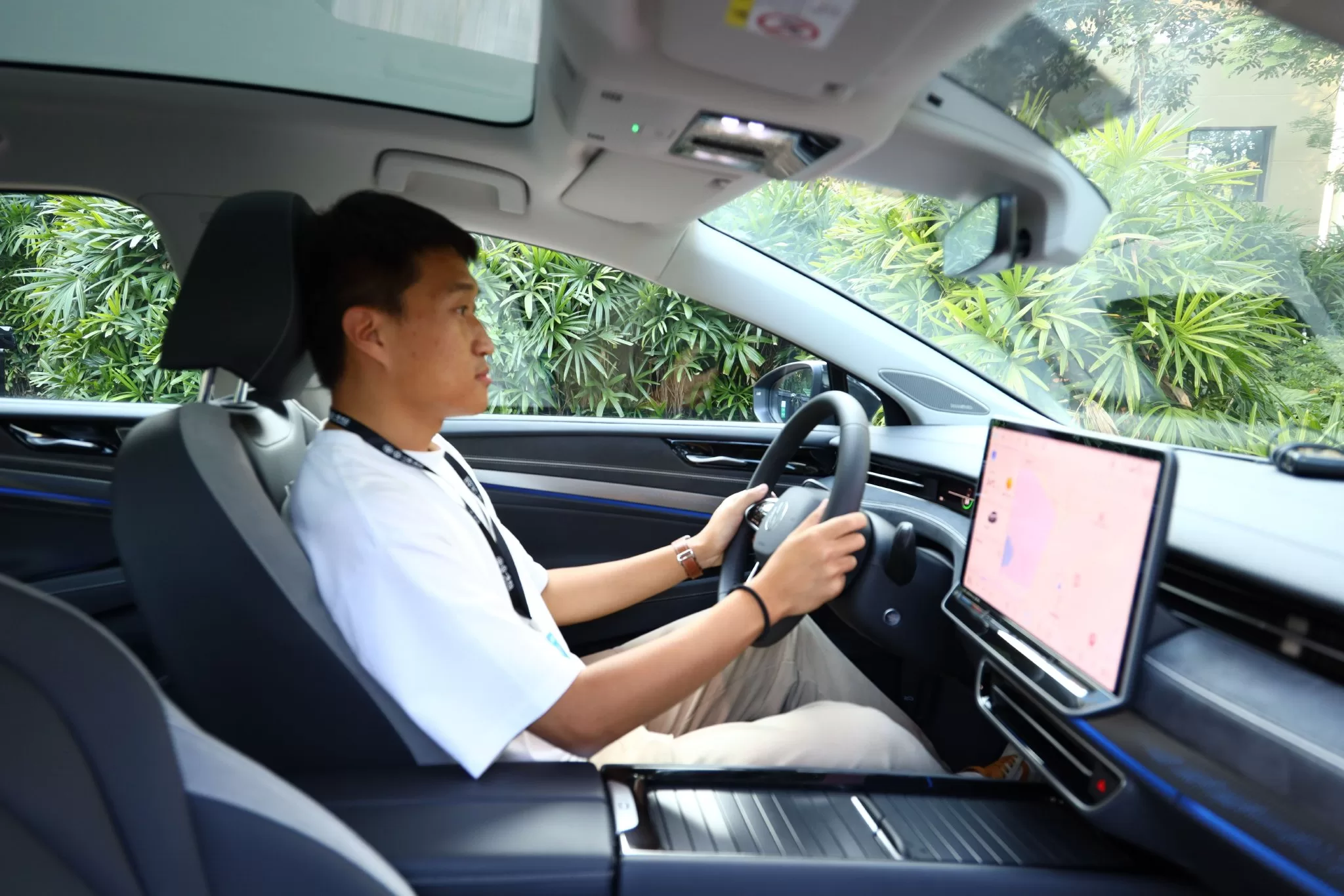
Model height 178cm Model stands at 178cm tall

Two fists of head space. Head space of two fists.
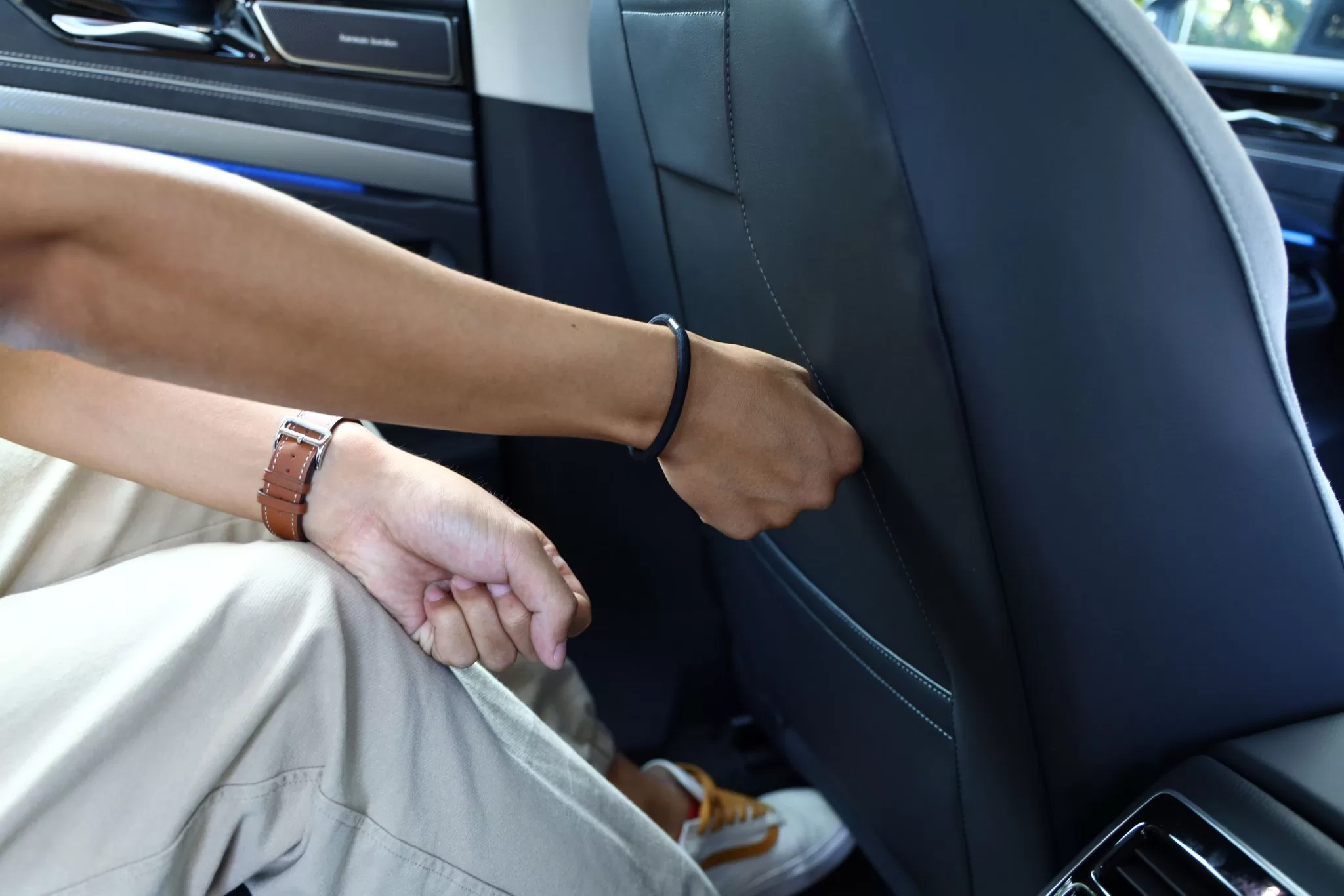
The rear legroom space is on par with the C-class car.

Ample rear headroom space
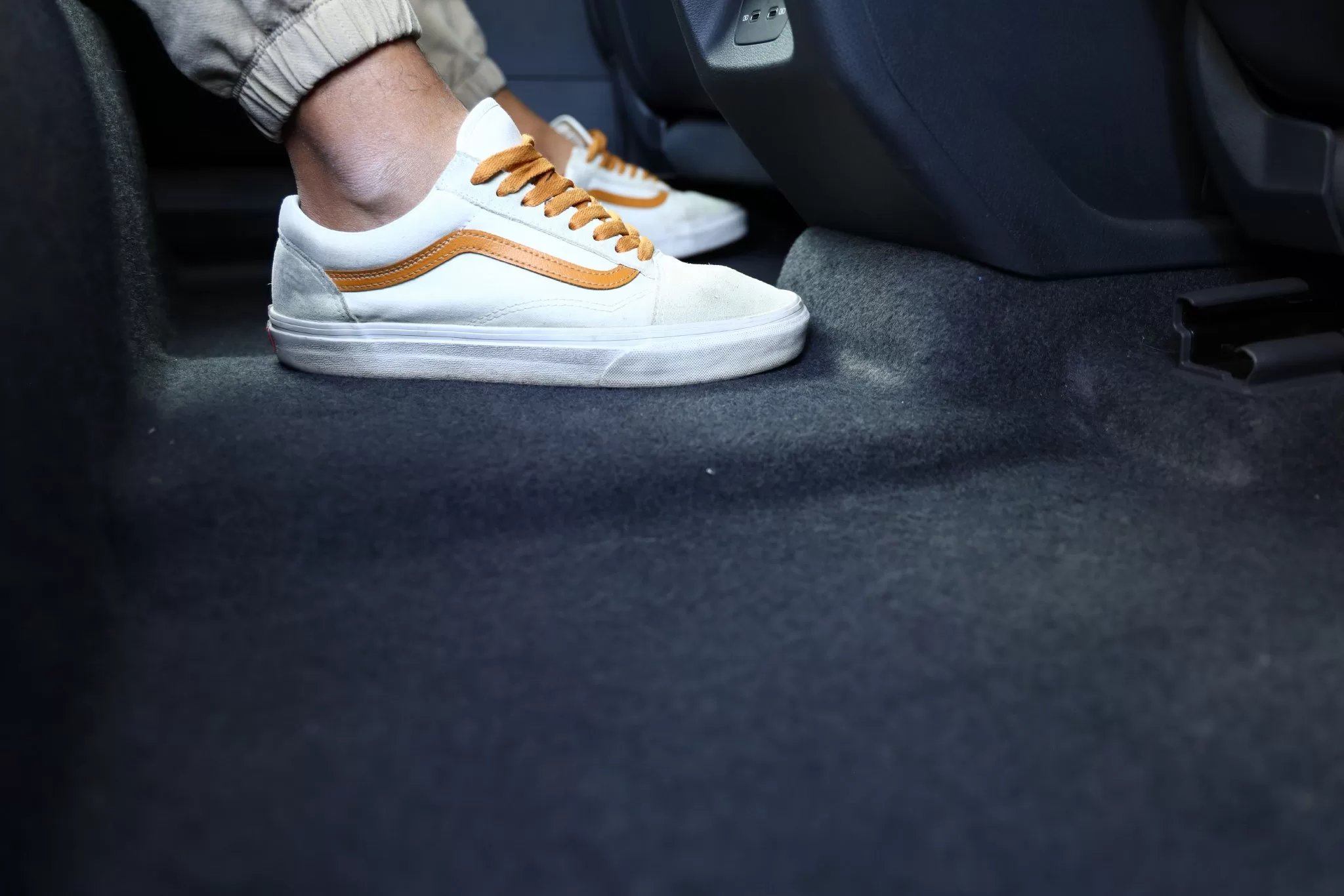
The rear floor is almost completely flat. The back floor is nearly flat.
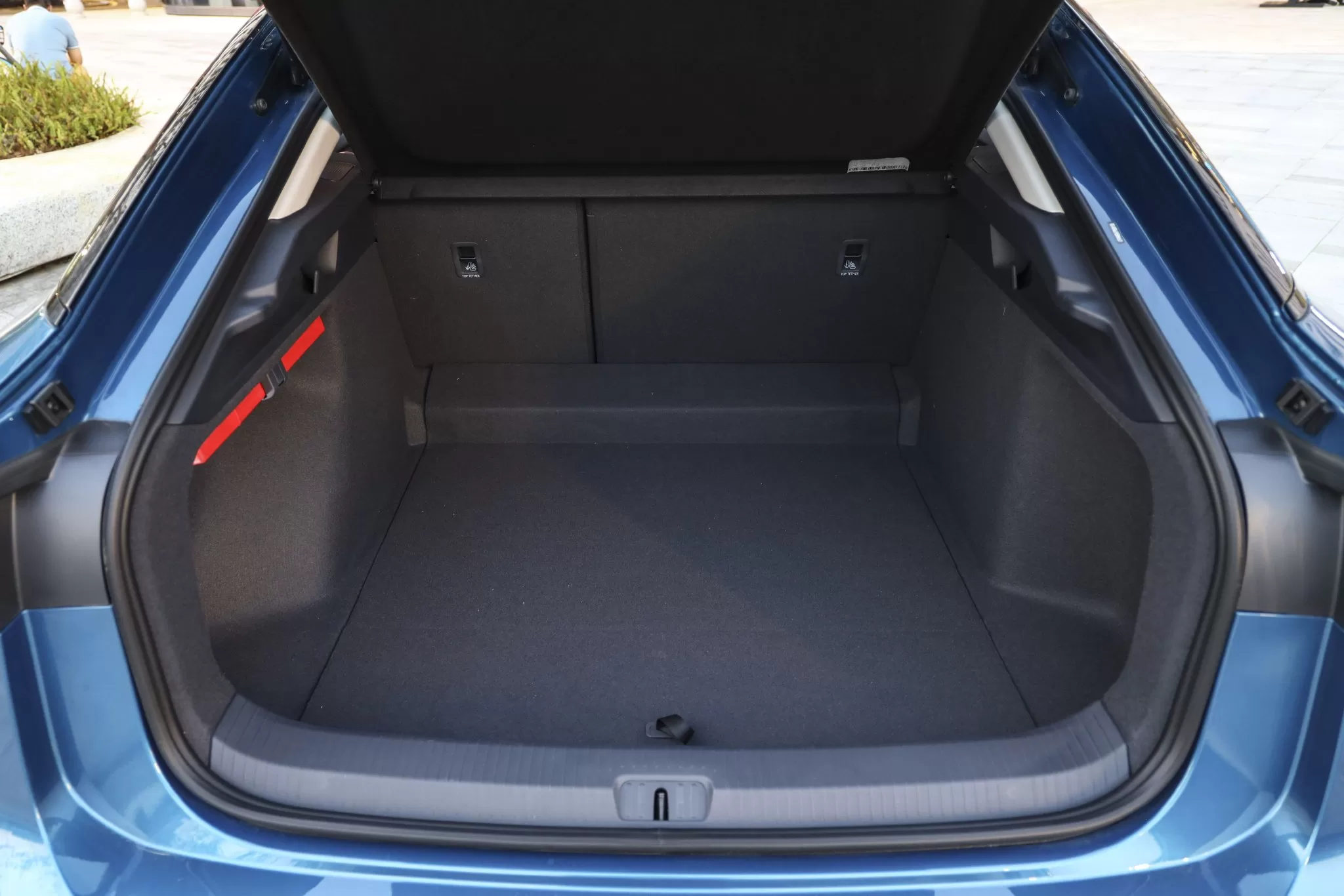
Trunk space of 521 liters, expandable to 1629 liters In conclusion
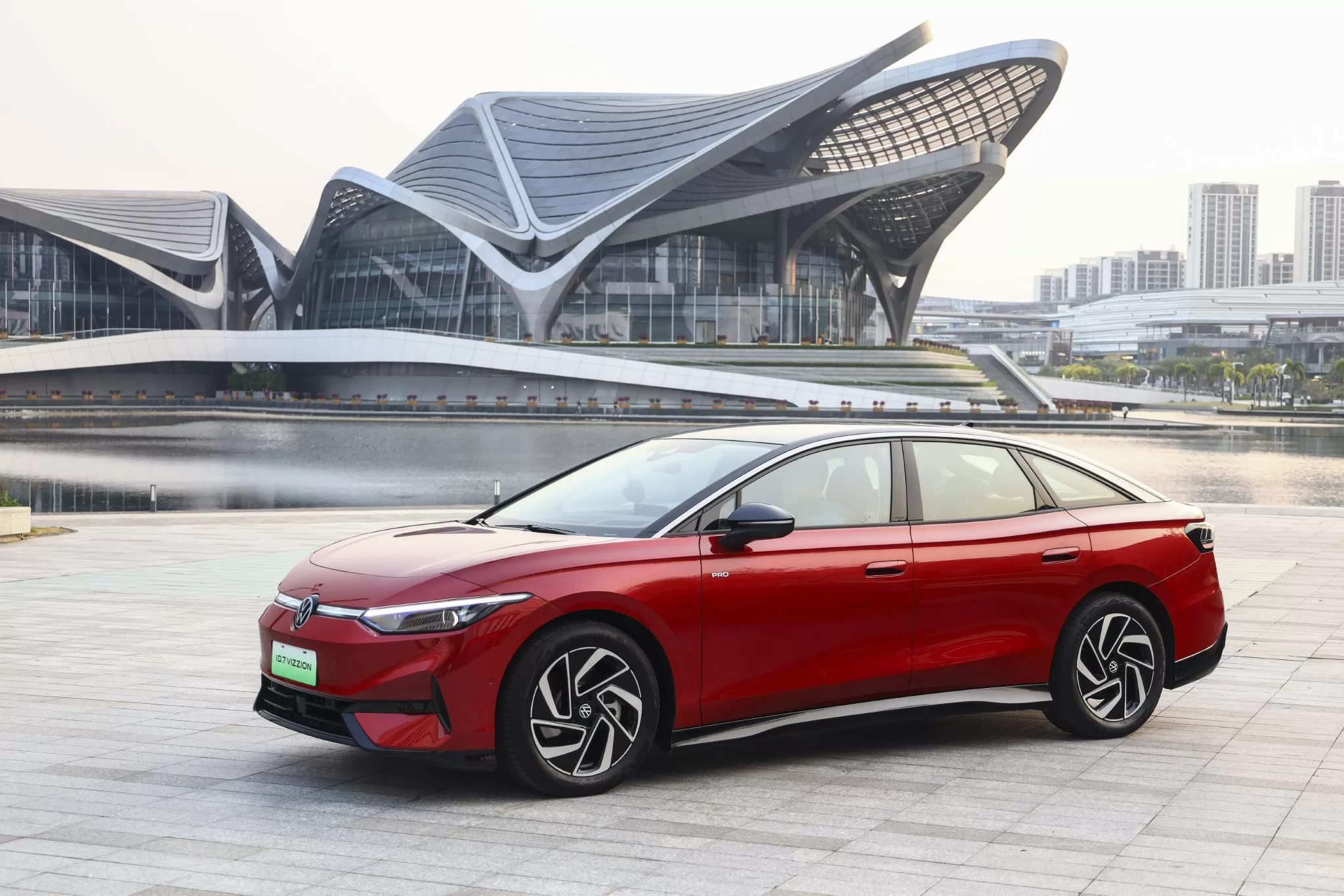
Currently, the pure electric car market is in a heated competition, especially for Chinese brand models. You can get a very practical pure electric car for around 150,000, and within the 200,000-250,000 range, intelligent cabins and advanced smart driving have become popular. The advantages of Volkswagen ID.7 VIZZION are obvious, with stable and solid chassis performance, precise estimated range, and excellent space utilization, but there are also some shortcomings. Traditional car companies like Volkswagen are still a distance away from Chinese brand intelligent cars in advanced smart driving assistance.